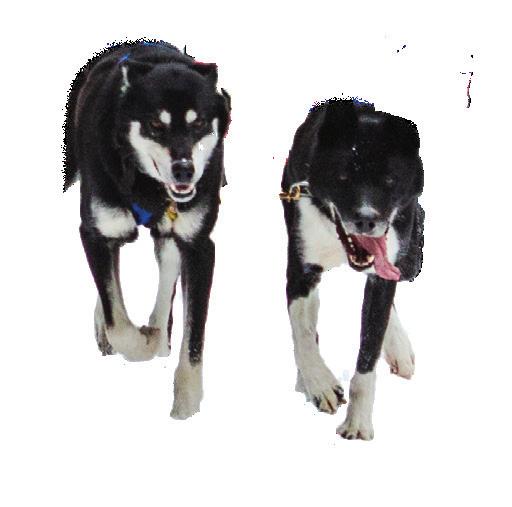

WINTER’S OLDEST ADVENTURE
Exploring the thrill of dog sledding at Menogyn
CHARTING THE EARLY DAYS OF VOYAGEUR
A forgotten tome of Widji history proves irresistible

40 YEARS OF WOMEN AT WARREN
‘Camp Warren isn’t just a place we go; it’s who we are’
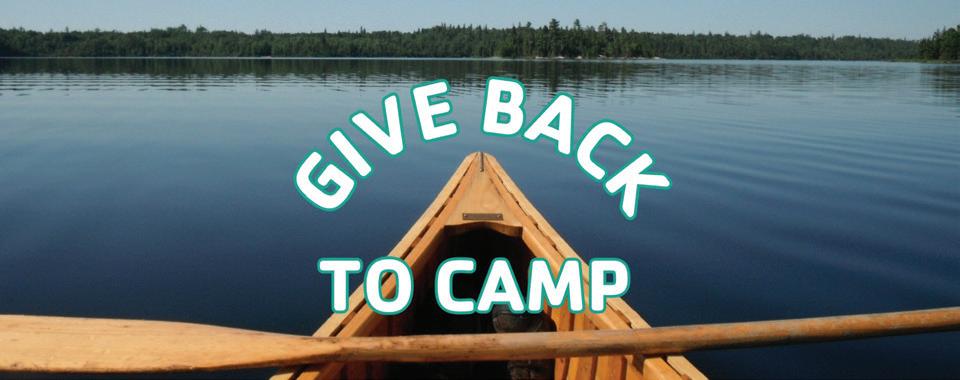
In January of 2023, we launched this alumni network in the hopes that people would come back together, reconnect with their camp and old friends, and build bridges across generations and to new friends.
Two and a half years later, with countless messages of support and gratitude, it is safe to say that “Letters from Camp” magazine has done that and so much more. Alumni are here, connected, and energized.
Now, as Issue 6 hits households, we have a goal to activate this network on our first-ever Alumni Day of Giving.
Why? Camp has never been more important to young people and families. Expenses have grown significantly, and we need your help to make sure we never turn away a camper who can’t afford it.
This one-day event will bring together people from across our nationwide community to celebrate and support Y Camps.
On Nov. 5, select the camp or camps you want to support, make a gift of any size, check a box, and tell us what years you attended camp. It’s that simple! But what’s not simple is the impact your participation will have — in fact, your participation is significant. Your contribution on Alumni Day of Giving is the gift of sustainability, scholarship opportunities, new supplies, program improvement, and more.
But you, dear reader, don’t have to wait for November! We have a special incentive for you to act now to help us jumpstart this special giving initiative. If you donate between Oct.16 and Nov. 4, you will receive a donor exclusive sticker with the heritage logo of the camp(s) you donate to. Or sign up to be a sustaining donor between Oct.16 and Nov. 5 and receive a donor exclusive window cling.
Thank you for helping us make the Y Camp experiences that you hold dear possible for others.
GIVE TODAY AND CLAIM YOUR EXCLUSIVE DONOR GIFT




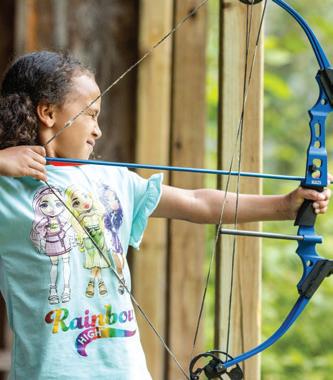
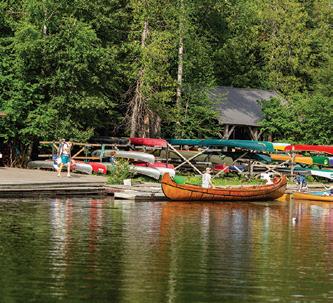



LETTER FROM THE EDITOR
For 13 years, I gave the same speech at our closing ceremony every week:


Camp has changed over the years, but the spirit of camp has remained the same since the beginning. When camp started, the goal was to create a place for kids to come and have fun, learn new things, be outside, and make friends. And most importantly, to be a place where everyone belongs.
Camp will always be part of you, and you will always have a home here. You being here at camp made this week special. You are part of the history of this summer. Welcome to the camp family! I am glad you are part of this community.
That speech was true back then and is still relevant today. Even though these words were not delivered at a Y camp, each time I work on this magazine, I feel transported in time as those core messages return to my memory. Every story I collect puts an exclamation point on every statement in that closing address.
Whether you were a camper, staff member, parent, volunteer, donor, or played some other role at camp (or maybe even all of the above), your story is part of the history of your camp. Your contribution to the community is what makes camp such a special place.
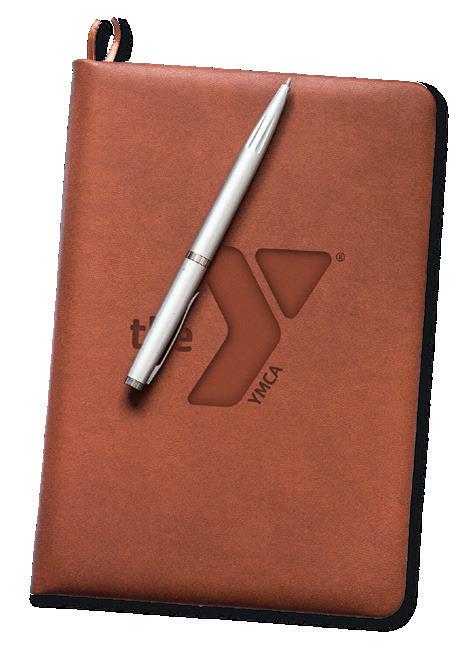

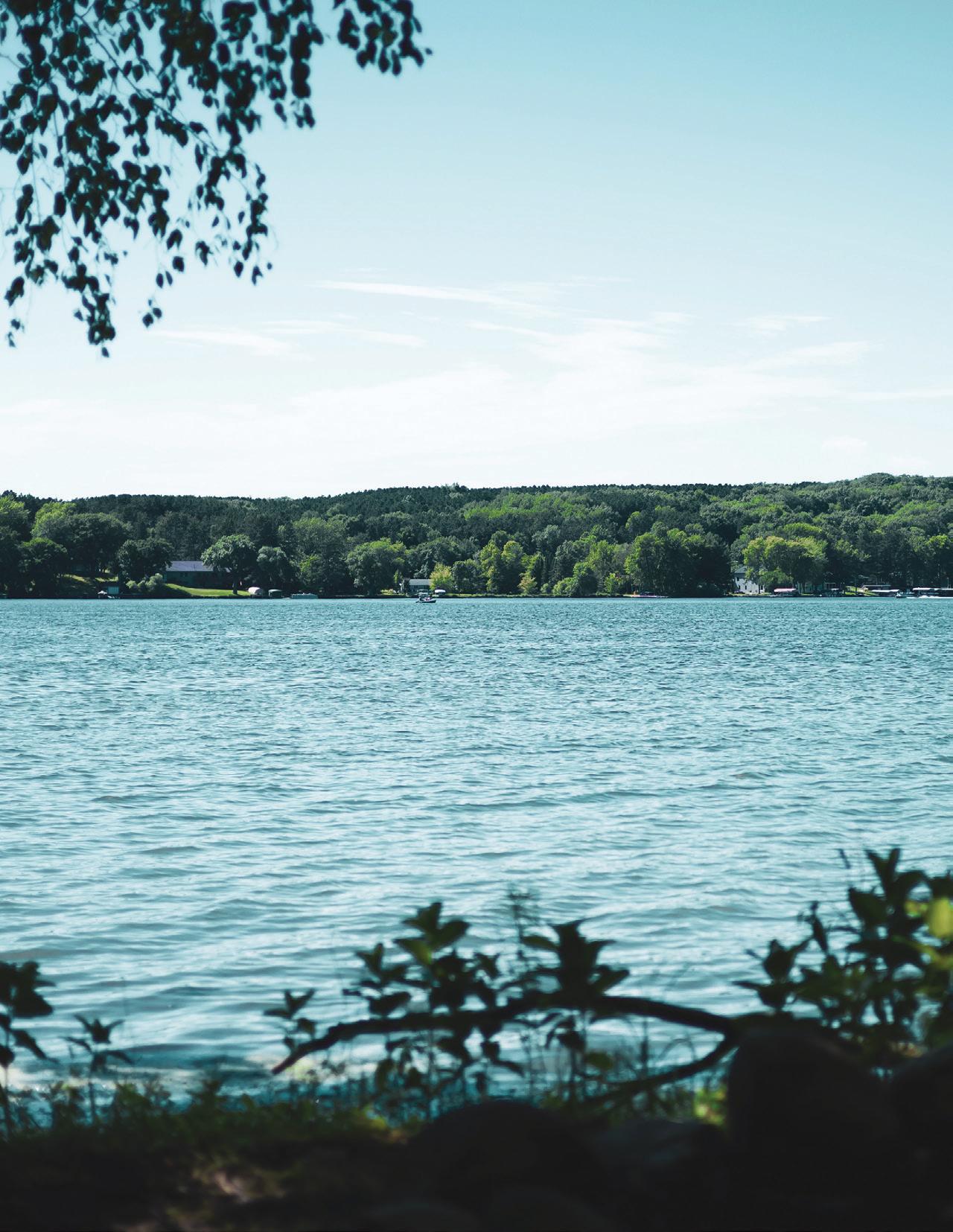

Camp history is a consistent theme in this issue and has been a regular topic in my role as director of alumni philanthropy. I have the pleasure of speaking with camp alumni and listening to their stories — whether recent or from decades in the past — and I truly love listening!
Camp stories are each completely unique, but nearly every one of them includes something about connection, belonging, learning, growing, and the feeling of being part of camp.
As you sit down to read “Letters from Camp,” know that I’m imagining all of us together, sitting around a fire, sharing stories, feeling connected, finding meaning in belonging to each other. This magazine, in a sense, is our campfire — our place where swapped stories build community and create meaning.
We’re grateful to have you joining us around this enormous Y Camp campfire.
As always, it was an honor writing and compiling the stories in this issue. Please continue to reach out and share your feedback, ideas, or unique camp story.
Thank you for reading!
Natalie King
NATALIE KING Director of Alumni Philanthropy Natalie.King@ymcamn.org
YMCA OF THE NORTH 651 Nicollet Mall, Suite 500 Minneapolis, MN 55402 ymcanorth.org
YMCA CAMP DU NORD Ely, Minn. campdunord.org
YMCA CAMP ICAGHOWAN Amery, Wis. campicaghowan.org
YMCA CAMP IHDUHAPI Loretto, Minn. campihduhapi.org
YMCA CAMP MENOGYN Grand Marais, Minn. campmenogyn.org
YMCA CAMP NORTHERN LIGHTS
Babbitt, Minn. campnorthernlights.org
YMCA CAMP ST. CROIX Hudson, Wis. campstcroix.org
YMCA CAMP WARREN Eveleth, Minn. campwarren.org
YMCA CAMP WIDJIWAGAN Ely, Minn. widji.org
GIVE THE GIFT OF CAMP ymcanorth.org/k2c
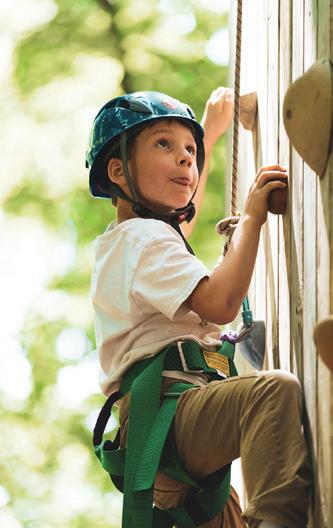
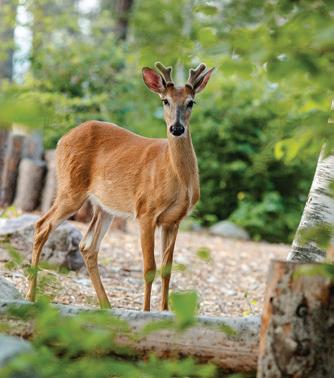
ALUMNI EVENTS
OCT 16-19
EDITORIAL STAFF
Natalie King
Director of Alumni Philanthropy
Editor and Lead Writer
Fall Family Camp at du Nord, Icaghowan, Menogyn and Northern Lights
Women’s Y She Rides Horse Experience at Ihduhapi
and Renewed Women’s Retreat at Icaghowan
Fall Impact Work Weekend at Northern Lights NOV
Coffee and Carharts with Menogyn 26-29 Harvest Fest at Northern Lights 26-30 du Thanks Family Camp at du Nord
DEC 13 Christmas at Croix at St. Croix
18-21 STEPS Retreat at Northern Lights
JAN 16-19
16-19

Reid Bauman
Jonathan Hulst
Joe Pollock Latner
Photographers
Shane Hoefer
Monica Kenney
Kayla Martin-Patterson Editorial Team
Michelle Edgerton
Executive Vice President of Advancement
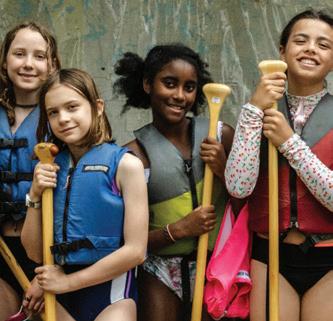
MLK Family Camp at Menogyn, Northern Lights, Widjiwagan
Adult Winter Camp at Warren
17-19 Winter Youth Camps at Icaghowan 22-25 Women’s Retreat at du Nord and Northern Lights
Women’s Winter Retreat at Widjiwagan 30 Y She Skis Retreat at Ihduhapi
FEB 13-16
13-16
President’s Day Family Camp at Menogyn, Northern Lights and Widjiwagan
Adult Winter Camp at Warren 19-22 Women’s Retreat at du Nord
20-22 Rooted and Renewed Women’s Retreat at Icaghowan
Winter Family Camp at du Nord
Women’s Retreat at Northern Lights MAR 3-8 Men’s Retreat at du Nord
Pancake Breakfast at St. Croix
THE WHY STORY AT Y(MCA) CAMP
WE COME TO THESE PAGES TO celebrate the achievements of kids and teens, and to remember the camp tales of yesterday, sharing and cherishing the memories we hold dear.
However, this one — this story is a shout-out to the grown-ups who continue to come to camp with a hunger for adventure, opportunity, and self-development. At the YMCA of the North Camps, adventure awaits Y Camp attendees of all ages, throughout all seasons (and some of these camp sessions are truly iconic).
More specifically, at the YMCA Family Camps, du Nord and Northern Lights, special intentionality is built into the schedule to ensure that adult campers can maximize their visit, while we tend to the needs and interests of their family members. While their kids and teens participate in programming tailored to their age and hobbies, adults are offered a range of activities (including the option to do nothing) that allow them to explore their pursuits and connect with other adults.
Something magical lives in the downtime for these adult campers. With few distractions and fewer responsibilities, adult campers find themselves reconnecting with old hobbies and interests, and getting curious about activities they may have never been exposed to had it not been for camp.
What follows is a reflection on one camper’s experience, highlighting the beautiful potential living inside camp-made opportunities to stay curious and connect with your authentic self.
Kevin Strauss, a YMCA Camp Northern Lights regular since that inaugural summer session, is an adult camper who has fully embraced the time away to slow down and savor peace at camp. On his annual trip, you can find Kevin in the Family Art Barn, relaxing with his wife Andrea and daughter Annie at “the best campsite at camp — Bass”, or enjoying dinner with his other daughter Sarah (who has served on staff since 2023).
Although there are many to choose from, the activity that Kevin looks forward to most during his stay is the weekly Talent Share event. With each visit to camp, Kevin taps into his love of storytelling and shares a unique tale at this special gathering, oftentimes about the wonderful world of nature.
LOVE WHAT YOU DO, DO WHAT YOU LOVE
Storytelling became a hobby that Kevin pursued after college. One of Kevin’s first jobs was working at an outdoor education center in the late 1980s. There, he attended a
Camp Northern Lights
Located on Bear Island Lake near the edge of the Superior National Forest, Camp Northern Lights offers an incredible variety of seasonal activities for families to enjoy throughout the year with 130 acres of trails and woods for families to explore. Founded in 2019, Northern Lights is the perfect destination for families looking for a first-time camping experience or groups interested in trying a new experience like mountain biking or cross-country skiing.
storytelling workshop that “lit a fire” under him. He enjoyed telling stories and using them to illustrate the concepts he was teaching.
A “why” story is a type of folktale that narrates and explains the origin of something, often in the natural world. The idea of using stories to connect people with ecology and animals was fascinating to Kevin. He sought out stories that helped him teach, but often, they didn’t quite work. And so he began writing his own stories based on the lessons he wanted to teach.
Since then, Kevin has written six books, including his original stories and instructional books on storytelling. He has also taught outdoor education, led storytelling retreats, and led programs for the International Wolf Center.
When Kevin and his family moved to Ely in 1998, he started leading storytelling retreats at a resort called Northern Lights Lodge. He also did performances at a resort called Timberwolf Lodge. Years later, those two resorts were both sold and combined to become YMCA Camp Northern Lights.
Kevin, telling a story





Kevin and his family have been attending Family Camp at Northern Lights since 2019, and his daughter Sarah has been on staff since 2023.
A HOPE TO INSPIRE
Kevin believes that anyone can learn the art of storytelling. The key is to find a story that someone can relate to and connect with, so that they can practice it repeatedly. He described it by saying, “When you tell a story out loud, you bring it to life. Each time you tell a story, it is slightly different, and you have to tell it multiple times before a story is ready.”
“It’s not about memorizing the text of a story, because if you do that and get interrupted, you could lose the whole thing. Storytellers remember a story through images in their head. I think of four pictures — the story’s beginning, end, and middle parts. When you tell a story, you describe what is happening in the boxes. A well-told story can transport your listeners to another place and time.”
He went on to describe that telling stories out loud gives the storyteller flexibility to adjust the story to the audience. If the audience isn’t connecting, consider shortening the story. Depending on your location, you can add details to the story that fit your surroundings. “No story works for every audience.
And every time I tell a story, you will notice it is a little different than the time before.”
How the Animals Got Their Colors
by Kevin Strauss
Long ago, before people walked the earth, every animal in the world was white.
But one day, Beaver decided he wanted to be something different. He started talking to the other animals, and soon, every animal in the forest wanted to be a color.
Eagle said, “I have seen colors we could use, way up in the sky. After it rains, huge bands of color stretch from one end of the sky to the other. We could fly up there and get those colors.”
Beaver spoke up and suggested that “if I find an aspen tree tall enough, and line it up just right, I could make it fall on the band of colors and knock them to the ground.”
The animals liked that plan.
Finally, one morning, it rained, and then the clouds broke apart. Even though it was still raining, the sun shone through. As Eagle had said, the band of color stretched across the sky.
Beaver found a big tree that reached all the way to the sky. He lined it up with the rainbow and started chewing. Soon, the tree cracked and crashed into the rainbow, breaking into a million pieces. As the colors rained down from the sky, the animals flew, hopped, or ran toward them.
The birds got to the colors first — the goldfinch grabbed yellow, the jay painted himself blue, and the cardinal splashed red. But it was only the male birds because it was spring, and all the female birds were busy sitting on their eggs in the nest.
Later in the day, the male birds returned to their nests, but by that time, most of the colors had been taken, so the female birds had to settle for just speckles of color. When the disappointed females returned to their nests, the male birds hugged them, and some of their bright colors rubbed off onto the females.
Some animals lived far up north and didn’t hear about the plan, which is why Arctic Foxes and Polar Bears are still white.

“The key to being a good storyteller is to start with a story you like. If you like a story, you can project that enthusiasm to your audience.”

Because of his love of the outdoors, creating stories inspired by his time in nature, and sharing other writers’ stories about adventures brings him great joy, especially in a camp setting, where storytelling and story sharing are as integral to the experience as campfires and canoes.
During his most recent trip to camp Northern Lights in 2025, Kevin told a story that captivated every person in attendance at Talent Share Night. It is a beautiful story that imagines how the world around us came to be, in a very North-woodsy style. While the story in print is no comparison to an orator’s delivery, here is a paraphrased version of Kevin’s tale:
FOREVER A RELIABLE RETREAT
We often hear from our young alumni about how their time at camp shaped their professional pursuits as they transitioned to college and beyond after those formative years with our teams. However, our adult campers are reaching out these days to share a similar story, but one that reads a bit more like a homecoming. A homecoming to nature. A homecoming to simple silence. And a homecoming to self, where limitless potential to tap into joy is within reach.
While much of the world is rapidly changing around us, there is something predictable and meaningful about the way YMCA camp experiences bring people back to selfdiscovery. From seven to seventy-seven, campers of all ages return to camp to return to many things, and for Kevin, with each passing summer and his return to Camp Northern Lights, his homecoming is an affirmation to continue to pursue the interests that have always been a spark of joy in his life.

WHERE MEDICINE MEETS THE OUTDOORS:
Nursing Students on the Frontlines of Camp Life
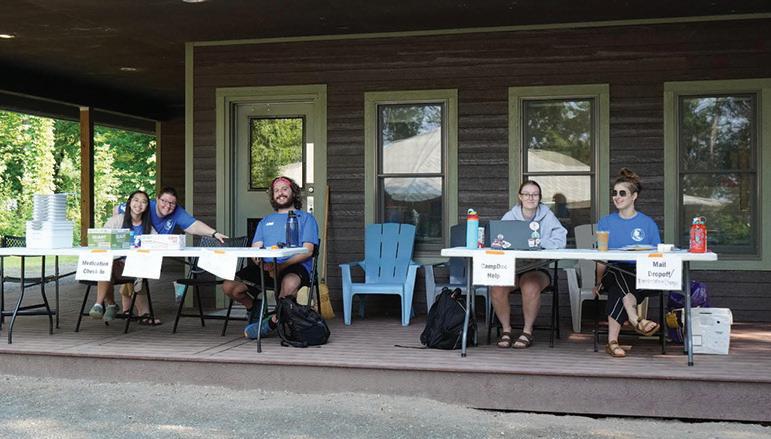
IT WAS TESS BENSON’S SECOND YEAR as the YMCA Camp Icaghowan camp nurse when she got a walkie-talkie call that a camper had been stung by a bee. This was the first time he had been stung, and almost immediately, the counselor recognized that he was having an allergic reaction.
Tess responded quickly, administering an epinephrine auto-injector from the camp’s emergency medical kit. She kept the camper calm, reassured him, and continued monitoring his vital signs. She also immediately contacted the camp director and the camper’s parents. Thanks to her swift response and steady presence, the camper promptly received the care he needed, de-escalating an otherwise scary moment.
While medical emergencies are rare, the camp nurse is on-site and oncall 24 hours a day, ready to administer bandages and ice packs, provide a camper with some much-needed quiet time amidst the camp excitement, or react if a more serious situation arises. Icaghowan is not unique in its need for this special role. Camp nurses play a vital role in the safety and health of participants at many of the YMCA of the North’s overnight camps, and a recent expansion of this key position to include interns has benefited both camps and future nurses.
MORE THAN BAND-AIDS:
The camp nurse is a volunteer position responsible for a long list of health and wellness-related tasks. A key responsibility that camp nurses manage is administering medication to campers, which can involve more than 60 kids at larger camps, some of whom may require multiple medications. They also serve as a main communication point, keeping parents informed if their child is ill or injured and how they are being cared for.
“Sometimes a headache or stomachache has more to do with homesickness, or possibly they didn’t sleep well the night before. So the health center also serves as a quiet place for campers to slow down and rest and have some quiet time amiddst the excitement out in camp,” said Sarah Beman, who has been a pivotal part of the camp nurse community.
Sarah was a camper at Icaghowan starting in 1989 and served on staff from 1990-92. In 2010, she reconnected with Icaghowan when she sent her seven-year-old to camp. When camp reached out, looking for nurses, she signed up for the following summer.
In 2011, Sarah spent a “busy, chaotic, wonderful” week as the camp nurse.
Outside of camp, Sarah worked in her full-time nursing role, teaching nursing classes at St. Catherine University in St. Paul. At the time, the students she taught were working on an associate degree program to earn their RN licensure. Internships were difficult for those students to obtain (due to the priority given to bachelor’s degree-level students instead).
During Sarah’s first week as a camp nurse, she immediately thought of how beneficial the experience would be for her students, and she knew her students would benefit from problem-solving in real-world scenarios. She discussed it with Bob Gagner (Icaghowan director, 2006-15), and in 2012, she returned to the camp nurse position for four weeks, ready to broaden the impact of this role.
At camp, they have the opportunity to see so much more than a traditional clinical experience.
Top Row: Sarah Beman, Katie Hanlon Bottom row: St. Kate’s nursing students Hailey Xiong & Kyle Jason (current students), Sydney Green (St. Kate’s student summer 2024 and health services coordinator summer 2025).



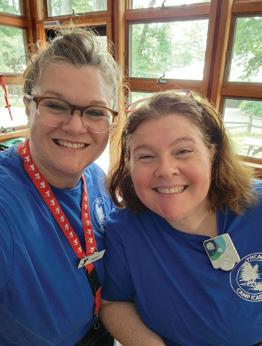
That summer, she brought four students (one each week) to serve as camp nurse interns. Sarah shared, “The students had a really good experience working with the kids. They got to do a little bit of everything from calling parents, medication management, and figuring out how to create a therapeutic connection with the kids.”
She went on to explain that “In a pediatric clinical rotation, students care for one to four patients, and it’s mostly observation work. At camp, they have the opportunity to see so much more than a traditional clinical experience. Additionally, because camp nursing is a full-time commitment for a week, students can accumulate enough hours to earn a full credit. It’s really good for these students.”
A PARTNERSHIP & IMPACT THAT KEEPS GROWING
The program is not only beneficial to the students but also to the camp. In 2025, Camp Icaghowan had a nurse and two nursing student interns on staff for every session of summer camp, ensuring a high level of care and attention to the campers and staff.
Since 2014, Sarah has also paired nursing students with other YMCA camps. Camp St. Croix, Camp Ihduhapi, and Camp Warren now have between 5 and 12 nursing school interns each year.
For these four overnight camps, each health service volunteer must be a licensed nurse, paramedic, or certified as an emergency medical technician. They volunteer for a week at a time and serve in a fully on-call capacity, ready to go at any time of the day or night. Sarah commented, “The staff nurse is really good at making sure campers have what they need. Our goal is to listen to the parent and make sure that our care matches what they want for their child.”
Tess Benson, a nurse volunteer at Icaghowan shared, “It’s a different kind of experience than what nursing school students get in a hospital setting. This year was all about learning about ticks and leeches, as well as how to keep a camper calm to assess them quickly. Assessment skills are really important. I really enjoy working with the students and seeing them learn in a hands-on way.”
Katie Hanlon was a nursing intern in 2023 and returned to camp as a nurse in 2024 and 2025. She explained how her experience as a nursing intern “reinforced that I wanted to work in preventive and primary care,” going on to say, “Camp nursing isn’t just about medications and injuries; it’s the holistic care too. You have to be prepared for everything. Is the camper with a stomachache sick, homesick, or do they just need some quiet time? At camp, you can make a real impact.”
We are so grateful for our health care team at camp and the exceptional care they provide for our campers! It’s been so fun to watch this partnership grow into truly purposeful experiences for the student interns, nurses, and ultimately, our campers! Whether it’s a bump and scrape or just some nurturing that is needed, our health care team works together to ensure our campers’ health, safety, and comfort here at camp.
Georgia Ellingson
Interested in volunteering
as a Camp Nurse or Camp Nurse Intern?
Camp Nurse
• Needed at all camps
• Must be a licensed nurse, paramedic or EMT
• In exchange for one week of volunteer time, nurses will receive one free week of traditional camp
• Email info.icaghowan@ymcamn.org for more information or to apply for a nurse position
Camp Nurse Intern (Icaghowan only)
• Contact georgia.ellingson@ymcamn.org for more information

Camp Icaghowan
Founded in 1908, Camp Icaghowan is Wisconsin’s premier overnight camp for kids seeking a small community environment. Set in 120 beautiful acres of oak savanna adjoining Lake Wapogasset, Icaghowan features three tree houses nestled in the forest canopies and a 44-acre island.
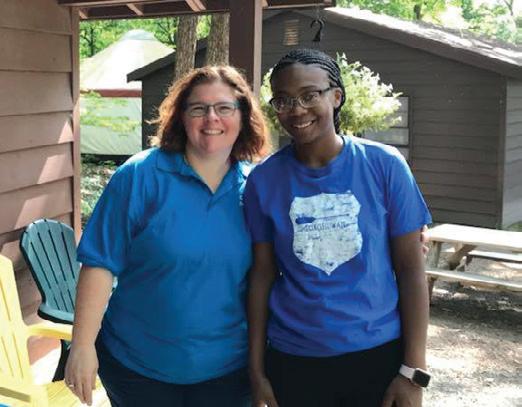


Sarah and intern, Jerrisha Goines, at Icaghowan in 2018
Katie Hanlon and Sarah Beman at Icaghowan
EXPLORING THE THRILL OF WINTER’S OLDEST ADVENTURE
Dog Sledding at Menogyn
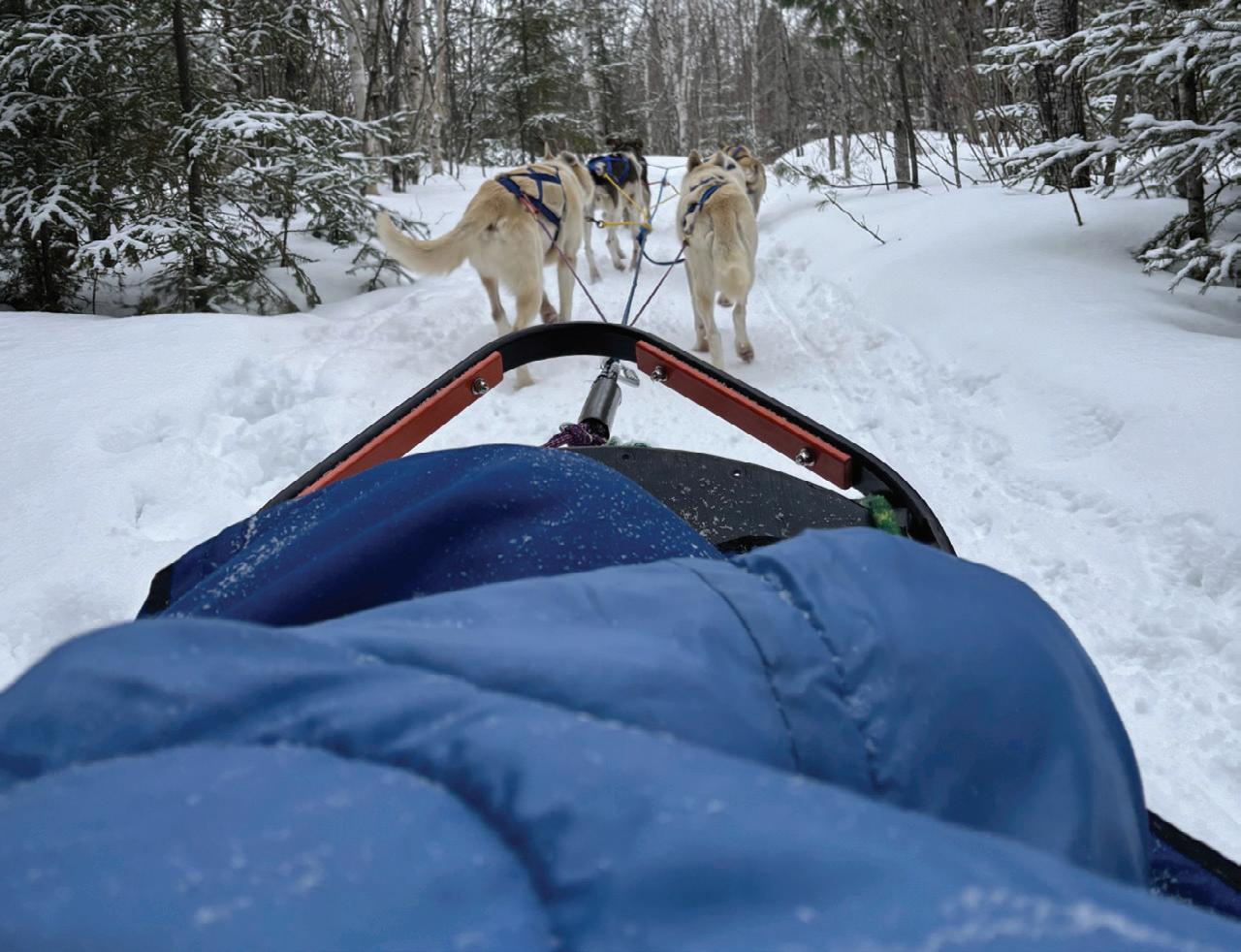
WALKING OUT OF THE DINING HALL , the chorus of 21 excited Alaskan huskies barking, jumping, twirling, and vying for attention is loud. They are a variety of colors, and each has a unique personality. Some are eager to greet visitors and yelp for attention. Some are shy and stay inside their individual dog houses.
This is the dog yard at YMCA Camp Menogyn.
Assuming that winter has provided us with a good coating of snow on the ground, seasonal Menogyn visitors are invited into this daily experience, with the opportunity to meet the dogs and learn about the ancient sport of dogsledding.
A marvel of Menogyn’s fall, winter, and spring program options, it is just one of many adventures most Y campers have yet to experience.
As the day’s activities begin, campers will see a special scene unfold as the dogs prepare to be harnessed and connected to the sleds that they will pull during the dogsled ride. There is an overwhelming amount of energy and excitement emanating from the crowd of dogs. Only six will be chosen to pull one sled, and all of them are eager to run!

Once all the dogs are connected to the sled, the rider (this could be you, Menogyn campers!) snuggles into blankets inside the cordura (similar to canvas) sled, while the musher is on the back of the sled to yell commands to the dogs. Sleds are wood, high-tech plastic, with lightweight aluminum runners and metal brakes, which allow for a comfortable and safe ride for the humans and dogs.
Before the ride, it is a cacophony of noise and excitement, but the actual sled ride is almost silent. The canvas sled drags across the snow, making a light whooshing sound. The dogs no longer bark but are focused on pulling. They work as a team with the lead dog guiding the way. They move quickly along the snowy paths, happy to be running outside in the brisk air.
The experience is visceral, raw, and intensely beautiful.
A DREAM EXPANSION
Dogsledding at Camp Menogyn originated in the 1980s as a “great partnership between two organizations,” shared Rolf Thompson, director of Menogyn from 1983-89, who was friends with the director of Wilderness Inquiry, an organization that offers wilderness
experiences to people with disabilities.
“Dogsledding was a way to help more people experience the beauty of the North woods in winter, and with Menogyn’s staff, kitchen, and dining hall, it provided an ideal setting to host the program. The program began as a weekend or two, and over the years, it grew into what it is today, a rare opportunity that families seek out as a winter exhibition.”
Currently, the program includes two staff members (the mushers) who manage over 20 dogs that live onsite at camp from December through March. Dogsledding takes place during winter family camps, outdoor education programs, and community programs that run throughout the winter season. Visitors are encouraged to visit the dog yard and interact with the dogs throughout the few months they are on site. The mushers run the dogs every day and give sled rides whenever possible. They also give “dog talks” where they share details about caring for dogs, provide insight into the history of dog sledding, and answer questions about anything dog sled related.
Camp Menogyn
Since 1922, Camp Menogyn has provided transformative small-group wilderness experiences including canoeing, backpacking, and rock-climbing trips. Only accessible by water, Camp Menogyn is uniquely situated on the edge of the Boundary Waters Canoe Area Wilderness on West Bearskin Lake.

THE FOUR-LEGGED DREAM TEAM
Mary Manning is known as the “chief dog wrangler” and owns Doodledog Kennel in Hovland, Minn. with her wife Julie. She owns 50 dogs that she trains, cares for, and runs in sled dog races. From October to December, the Menogyn mushers live, work, and train with Mary before the dogs head to Menogyn for the winter program season.
Mary has been competing in dogsled racing on and off since 1997. She “loves the controlled chaos while the dogs are getting ready to go, followed by the peaceful quiet on the trail. It brings joy and peace when things seem so chaotic in the world — to be present in that moment with the dogs.”
When asked what people should know about sled dogs, she shared, “These dogs have been bred to run and pull, and that’s what they love. You can’t force a dog to pull. Each dog has a unique personality. Some like to run short distances and are done. Some like to go for long runs. Some are good leaders. You have to get to know the dogs to get them to work as a team.”
Mary loves to see how much the dogs enjoy what they do and hopes that “people can feel all the love and joy reflected back to them, and that they make a connection with the dogs.”
WHAT IT TAKES TO ‘MUSH’
Ryan Odermatt held the title of Menogyn Musher in 2024-25 (in addition to being a trail guide during the summer). “Mary’s place is unique,” he shared, “because it’s off the grid, with no cell service, and located way out there. Her systems are dialed in and really set up for the dogs. Her and Julia are so welcoming, so kind.”

Ryan described his three months of training with Mary as “a good combination of Mary taking time to show you what you need to do, but also giving space for me to figure out what works because mushing is unpredictable and so you need to be able to problem solve.”
“At the end of 10 weeks, I felt nervous, but also confident. Well prepared. Something Mary and other mushers had stressed repeatedly is that the dogs rely on you for everything. Rely on you to survive. With Mary, we helped, but we weren’t the sole caregivers. At Menogyn, we were the ones with the most training and experience, and it was our responsibility to care for them. It’s a big responsibility to provide the highest level of care.”
Ryan went on to detail his life as a musher:
“My day and whole life revolved around dogs. They were my first and last thoughts of each day. Dog sledding is a partnership between humans and dogs. If you see a musher with well-fed, well-trained, happy dogs who are happy to run, you have a musher who has dedicated their life and energy to taking care of dogs. You will never find better cared for dogs than these. These are working animals who love what they do. But if you don’t let them use their bodies, they won’t be as happy. They need enrichment and the opportunity to run. If they aren’t running, they get moody and misbehave.”
Mary echoed Ryan’s comments, saying, “I’m happy they have the opportunity to get out there and run.”
One of Ryan’s favorite memories was during a program that Wilderness Inquiry brought to camp. “Mark, who used a wheelchair, came to the dog yard. Roscoe was one of the big male dogs who was silly and really sweet. He crawled into Mark’s lap and rested his head on Mark’s


chest. I think he could sense that he needed to go to Mark to have that connection. He was so gentle and respectful. Dogs are really socially aware.”
Ryan’s favorite thing as a musher was seeing people get excited to meet the dogs and shared how he found it “really special to provide this experience to people.”
ADVENTURE IS YEAR-ROUND
When asked about this special programming, Menogyn Executive Director Forrest Ahrens said, “The dogsledding program is unique to Menogyn’s winter programming and something we are really proud of. We love our dogs up here, and it’s really a magical thing to see kids’ faces light up as they connect with the dogs. I think that dogsledding is a way for people to engage with the history of this area and some of the culture that people are not as familiar with. The word ‘camp’ often makes people think of summer, but there is a whole world of adventure waiting for you in the other months of the year, too.”
Mary fittingly added, “If you have the opportunity to take the adventure, do it. Maybe you’ll never do it again, but maybe it will change your life.”
Visit our website for more information about winter programming at Menogyn and to sign up for your own Menogyn adventure.

Mary Manning
Ryan and sled dog Jester
THE ENDURING LEGACY OF CAMP ST. CROIX

How a group of alumni were shaped by camp and became bound by brotherhood
SEVENTY-SOME YEARS HAVE PASSED
SINCE they were staff members at YMCA Camp St. Croix. Back then, they were tasked with leading canoe trips, singing songs, wrangling homesick kids, and performing a million other duties required at camp. They didn’t know it at the time, but they were forging something lasting: a brotherhood built in pine forests and around campfires, a loyalty shaped by shared experience, and a reverence for the men who led them all.
Now in their 80s, this group of alumni still meet up, despite the natural dwindling of numbers caused by the march of time. Some people are less mobile, and some have passed away. There are still a number of active members, though, who remain connected through regular emails with the group. When “Letters from Camp” asked to tell their story, responses flooded in. These men were eager to share their memories and love for camp and each other. They spoke of those days with a quiet kind of awe, recalling their first real sense of purpose.
This is their story. Of laughter and leadership. Of growth and grit. Of a camp that gave them more than just memories — it gave them each other.
THE MEN WHO LED THEM
Every summer from 1950-57, Camp St. Croix would come alive with the wind in the trees, the chirp of the birds, echoes of laughter across the main field, and the reassuring voice of Jerry Manlove.
To campers, he was a legend. To the counselors, he was more than a boss: he was a mentor, a compass, and sometimes, a quiet anchor during the stormy summers of adolescence. And yet, Jerry himself was only 24 when he arrived at camp. Phil Fabel, whose dad was chairman of the board at the time and the one who hired Jerry,
remembers, “Camp wasn’t going great. The board took a chance on Jerry. And forever after that, [my dad] loved Jerry like a son.”
Jerry believed camp was more than canoeing and field games: it was a place to build character, empathy, and confidence. But the real magic wasn’t in the way he ran camp, it was how he empowered the counselors. He saw the staff not for who they were, but for who they could become, entrusting them to problem-solve and lead — not because they were fully prepared for this level of responsibility, but because he believed they would rise to the occasion.
A memory that so perfectly captures Jerry’s leadership style was shared by Paul Chapman, who was 15 years old when he was hired as the
out.” I then gathered a group of counselors together, and we managed to get the truck unstuck. There was no doubt in Jerry’s mind that I would figure it out. He treated everyone that way; he treated everyone equally. He recognized and respected us equally for whatever contribution we made. And ultimately, Jerry changed the way we saw ourselves and each other.”
FROM JERRY TO JACK
When Jerry left Camp St. Croix in 1957, he passed the torch to Jack Murdock. Jack had been the waterfront director and one of Jerry’s close friends, and with this seamless leadership transition, set about establishing his own legend, honoring Jerry’s legacy while adding his own touch.
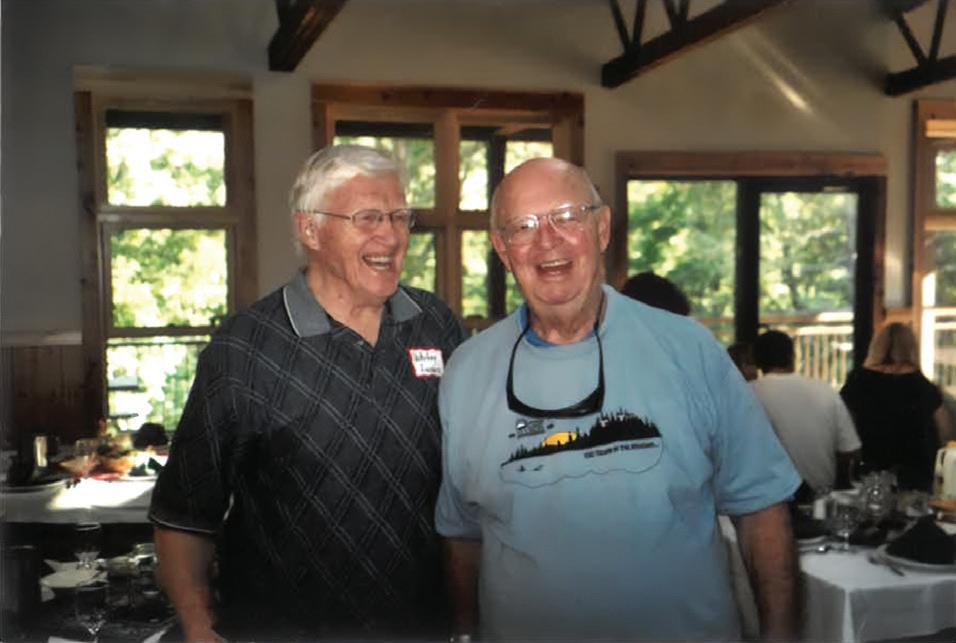
1958 Camp St. Croix

themselves, Jack taught them to believe in each other. Jack was the director from 1957-77.
As evidenced by the legacies each of these leaders created during their tenure at Croix, the greatest directors don’t just run camps: they shape lives.
THROUGH THEIR EYES
For the young men who worked for Jerry, and later, for Jack, camp was where they learned to lead. It wasn’t just about making sure campers got to archery on time. It was about showing up for each other, and for the kids.
Dick Carlson remembered, “I came to camp lacking in confidence about myself, and put my bedroll on that bunk, saying, “Dear God, please help me,” and then I went out and lived life to the fullest. You find your life when you lose it for others. Every day at camp, this was the way we were called to live life — for the kids! We watched those boys grow, and somehow, so had we.”
Paul Chapman chimed in, saying, “I went and found a mystical land. I was 14 years old, and my contribution was accepted equally. I was given responsibilities, expected to succeed, and left on my own to figure out how to make it happen. We were valued, listened to, and trusted.”
Paul Rick added, of his experience on staff, “the many ways that Camp St. Croix has enriched and strengthened the lives of so many individuals is perhaps its greatest legacy.”
INSPIRING ALUMNI TO STAY CONNECTED
The experience of working for Jerry and Jack has proved so transformative that these former staff have adopted the directors’ surnames: they are the Manlove/Murdock alumni, as surely as they are alumni of the camp itself.
Over the years, dozens of staff worked for Jerry and Jack. Many kept in contact with one or both of them, as well as with each other. But in 2006, Jerry called Paul Heffron to let him know he would be in town visiting. “One thing led to another, and word spread. Instead of a few of us getting together for coffee, it turned into a full-fledged reunion with over 40 former staff.”
In 2007, ’08, and ’09, additional reunions came
together. In 2010, approximately 60 staff alumni would come together annually. Paul explained, “By 2009, we had an email list of 65 of the 85 total staff that had accumulated since our first reunion in 2006. I raised the question, ‘What should we do with all this stuff in our archive?’”
The answer was quite simple: a book. In 2010, Paul Heffron compiled and edited “Remembering Camp St. Croix: the Manlove Years 1950-57.” The book was about the members of the 1950s camp staff, their camp experience, and its significance in their lives. It was written and illustrated by the members themselves.
Paul wrote, “What ties us all together is the experience of being on the staff at Camp St. Croix and being influenced by its director. The experience and influence had a profound effect on our lives. We hope that our group and the book will demonstrate for others that their camp experience and friendships are of special significance in their lives. We hope that we have shown what a camp alumni group can become and how it can support its camp.”
From the book came more reunions, including staff who worked under Jack Murdock as well. The email list expanded to include regular communication with its members.
70 YEARS LATER
Now, many of those once-young counselors are in their 80s and 90s. But when they talk about camp, there is still a youthful gleam in their eyes.
They still remember Jerry’s voice at dusk, calling them to reflect.
They still hear Jack’s hammer, early in the morning, fixing what needed fixing.
They all speak of a brotherhood built on early mornings, late nights, scraped knees, and inside jokes. They talk about how connected they were to each other, to nature, to something simpler and truer. Seventy years later, the camp is forever etched in their hearts. The weight of tradition, the joy of connection, the power of presence.
They thought they were simply leading campers, but they were also finding themselves.

IN MEMORIAM, AND IN GRATITUDE
Camp St. Croix was an all-boys camp until 1974; thus, the majority of the Manlove/Murdock alumni are men. But there were a few women on staff. One notable woman was Audrey Weldon Johnson who was on staff in 1952-53. She was featured in “Letters From Camp” in October 2024.
Audrey was passionate about Camp St. Croix and proud of her time on staff. She was an avid photographer and archivist with scrapbooks filled with photos from camp. Paul Heffron’s book “Remembering Camp St. Croix: the Manlove Years 1950-57” used many of her photos.
Audrey passed away in March 2025. At 96, Audrey had lived a rich life spent surrounded by her large family and community of friends. She was married to her husband Roy for 59 years before his death in 2014, and had a 20-year career with Burlington Northern Railroad. She was the “go-to” person for planning events and even wrote “The Road Back Home,” a guide to planning reunions. She was an active volunteer, passionate about several hobbies, and beloved by many.
Her life was full of activity, accomplishments, and love, and 72 years after working at camp, that experience was still so meaningful that it was mentioned at her funeral. Her camp photo albums were proudly displayed, along with so many of the artifacts from an inspiring, fulfilling lifetime. Memorial gifts received were directed to Camp St. Croix.
In preparing this story, once again, her photos were used to document the legacy of these years of Camp St. Croix.
Thank you to Audrey’s family for lending us her photos.
Camp St. Croix
Founded in 1909, Camp St. Croix is situated on 400 acres of woods, prairies, gardens, and pine-covered bluffs overlooking the St. Croix River National Scenic Riverway. Camp St. Croix is a perfect place for kids, teens, families, adults, and organizations to connect with nature and each other.


Manlove staff alumni reunion in 2025
THE SUMMER THAT LASTS A LIFETIME
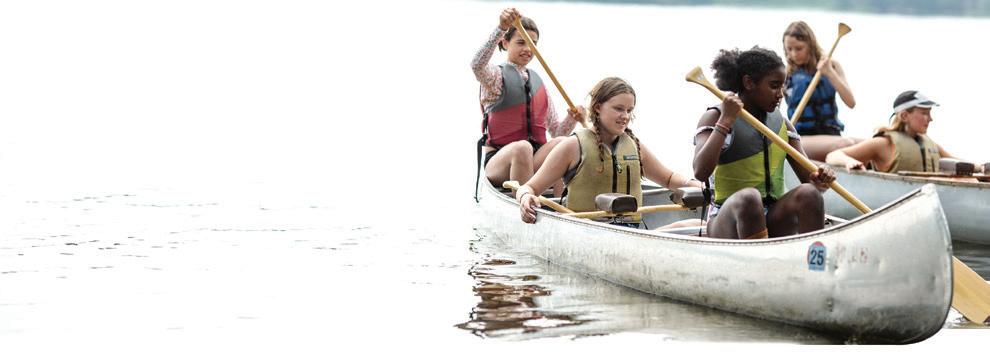
“I WAS A FATHERLESS TEENAGER, WHOM Jerry [Neseth, Ihduhapi Director from 1965-90] always had time for. He helped me, became a role model, encouraged me, and paid for my stitches when I got injured at camp. We became lifelong friends.”
And with those few words, Richard Toftness hinted at a story that could fill an entire book.
Richard was 10 years old when he went to YMCA Camp Ihduhapi for the first time in 1961. In 1967, he joined the staff, working in various roles until 1972. He then served on the camp board from 1966-76. In 1982, Richard and his wife Donna started an endowment as a way to honor the role that Ihduhapi played in his life, and in 2013, he was involved in the Palmer Ericson Chapel renovation project. It’s clear Camp Ihduhapi has never been far from Richard’s mind.
Over the 50 years since he was on staff, Richard went on to have an impressive career in technology, lived in several different countries, won both an Academy Award and an Emmy, and achieved many other notable accomplishments. However, through all of that, his time at Camp Ihduhapi and the relationships he formed there would become a defining element of his life.
While time carried on, and life pulled Richard away to some amazing experiences, an e-mail brought him back in time, back to Ihduhapi, prompting him to share a story that in many ways says it all.
A SIMPLE ASK, A POWERFUL REMINDER
This past spring, you may recall seeing our “Fill the Bus” campaign that raised money for camp scholarships before the launch of the 2025 summer season.
“Your email asking for donations to fill the bus brought back memories that had been pushed back into the dark reaches of my memory,” he wrote to us, noting it was “an outstanding piece.”
He continued: I remember the day I boarded the bus at the North Minneapolis YMCA building. It had a small brick house that was the office for the YMCA staff who served the kids in North Minneapolis. In the parking area behind the building, I can still see the light blue YMCA truck, which was tiny and had only three wheels. It was more of a golf cart than a pickup truck, especially by today’s standards.
Our Indian Guide group had been at Ihduhapi several times, camping at what I learned was called the Indian Village on the hill above the athletic area. We camped, cooked, and had pillow fights on the log in the lodge. Mattresses dampened our inevitable fall. We had a morning church service in the Palmer Ericson Chapel on Sunday, followed by a huge breakfast in the dining hall. I can still see my dad sitting in a blue work shirt on one of the chapel’s wooden benches. During several other winters, we had been at camp sliding down the monstrous Toboggan Hill and enjoying hot cocoa around the fire in the lodge.
My dad had passed away the previous year, leaving our family of three to learn how to navigate life without an especially attentive father.
I was going to camp on a scholarship. The previous fall, one evening, two gentlemen came to my home and asked my mother if they could sponsor me to go to camp. They were members of the local Y’s Men’s Club. They had been in contact with my grade school and had heard about the loss of my father. I remember vividly that they asked what my mother could afford of the $48 fee.
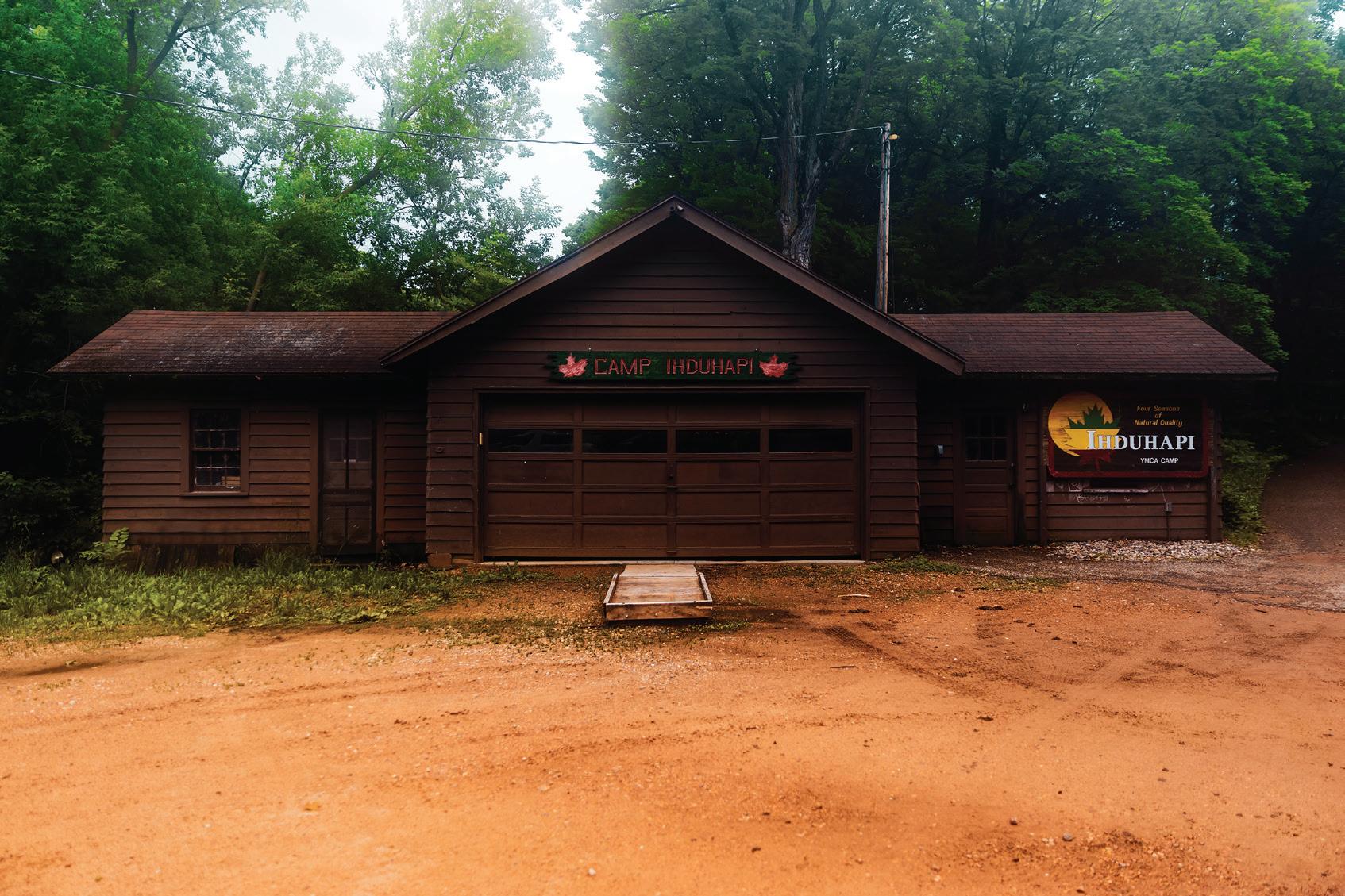

I fell in love with camp. Many times after the guests were gone at the end of a weekend, and peace had returned to the grounds, I would find myself back in the chapel, just taking in the view and getting ready for another week.


Camp Ihduhapi
Camp Ihduhapi has provided enriching camp experiences since 1929. Situated on 165 acres of vibrant maple forest along the shores of Lake Independence, Ihduhapi is the perfect place for youth and adults to learn new skills, build confidence, and create lifelong memories.

I fell in love with camp. Many times after the guests were gone at the end of a weekend, and peace had returned to the grounds, I would find myself back in the chapel, just taking in the view and getting ready for another week at the U of M. In the fall, I enjoyed walking through the leaves or sitting on Sunset Knoll, taking in the peace and reflecting on all the good times I had.
Your piece brought tears to my eyes, so let me end with what I said in a speech when I spoke at the re-dedication of the chapel [in 2014].
“I have a challenge for the camp staff of today. In the spirit that I have been talking about please never lose sight of the fact that you can have a huge effect on the lives of the kids and staff that pass through this facility.
When you’re rushing to your budget meeting, and there is a camper that has fallen along your way, take the time to help and listen. Those 10 minutes may make a heck of a difference for a kid who has never had someone take the time before.
Beryl Markham is quoted as saying, ‘If a man has any greatness in him, it comes to light, not in one flamboyant hour, but in the ledger of his daily work.’”
WHERE MEMORY, MISSION, AND MAGIC MEET
This beautiful, vibrant story speaks to the hopes of a young boy, vividly illustrates camp scenes from decades past, and connects Richard’s experience to a new generation of campers. This is the essence, the heartbeat, the soul of “Letters from Camp.”
We shared a campaign with a clear mission to fill buses with campers, and it unlocked core memories in an alum with a profound history at Ihduhapi.
What inspired Richard to reach out and share his story with a new-to-him Y team member also inspired him to reengage as an Annual Fund scholarship supporter and ultimately inspired this story to take shape on these pages.
The web of interconnectedness that this magazine builds is a profound gift. During a time when people are seeking meaningful connections and communities that uplift and inspire, it is wonderful to see the many ways those things are taking shape right here.
It can’t be said enough: Thank you for being here.

And a special thank you to Richard for the long-standing legacy he continues to shape within our camp community.
Richard Toftness
Richard Toftness
UNCOVERING WIDJI’S TIME CAPSULE: CHARTING THE EARLY DAYS OF VOYAGEUR
A forgotten tome of Widji history proves irresistible
by Natalie King
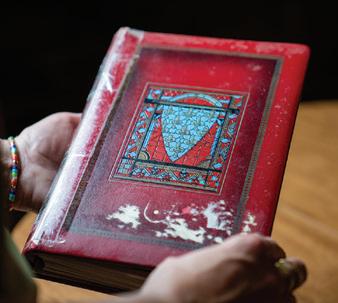
IMAGINE DIGGING IN YOUR GARDEN, AND suddenly your shovel meets resistance with a loud “thunk.” Some quick sweeps of your hands in the dirt reveal the top of a metal box. You pull it out of the ground, open the box, and see a scattering of various things. This is no basic metal box; this is a time capsule! Someone took the time to capture these mementos, and you feel inspired to do something to honor these memories.
Ok, minus the garden, shovel, and metal box, this is pretty much what happened to me via email.
One morning, my inbox held an email from Widji and du Nord alum John Shepard. John wrote, “I enjoyed the last issue of “Letters from Camp.” Somehow, it jogged my thinking about a photo album that emerged from a neglected pile in my office not long ago. I’ve been planning to return it, but I thought I’d let you know about it as it might make for an interesting article.”
The photo of the album that John included in that email revealed something magical, and I knew I needed to share this at our community campfire (i.e. this magazine). The album was a gift from the “Committee of Management” to Whitey Luehrs (Widji director from 1950-61). It chronicles the history of Widji’s Boy Voyageur program from 1955 to 1964 (the first Girl Voyageur trip was in 1956 but is not included in this book).
THE ORIGINS OF VOYAGEUR
For 70 years, the Voyageur program has been the culminating experience for generations of Widjiwagan campers. Not all campers take this trip, but for those who do, Voyageur is a capstone experience where campers grow in confidence, deepen their connection to the natural world, and build lifelong bonds through shared challenges and accomplishment.



SEGMENT 4 OF OLD VOYAGEUR HIGHWAY — 1956 (THE SECOND TRIP)
“The first four days out were through such encouraging lakes as Lake Hope and to more typical lakes such as Lake Despair before reaching Kakagi Lake; it’s crystalline clear waters are a symbol of the truly wild beautiful wilderness encountered.”

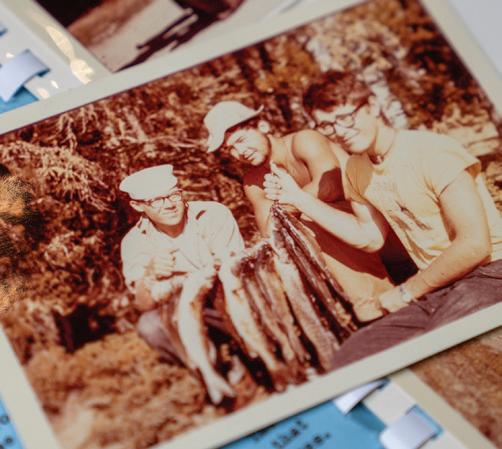

SEGMENT 3 OF OLD VOYAGEUR HIGHWAY — 1955 (THE FIRST TRIP)
“A hand-operated marine railroad was welcome help in portaging between Little Gunflint and Little North Lakes. It was at this point that the Voyageurs held a sort of crossing-the-equator ceremony as they inducted novices, passing this point for the first time to become “hommes du nord.” Thus far, they had been derisively known as ‘mangeurs du lard’ or Pork Eaters.”

SEGMENT 6 OF THE OLD VOYAGER HIGHWAY — 1958 (THE FOURTH TRIP)


“Thirty miles and five days against the strong shallow river led to the Methye Portage, the longest and most historic on the Voyageur highway. We wanted to find out if the historic journals were accurate. They were ... the next several days were spent charting and carefully shooting some of the most famous and thrilling rapids of the Voyageur route. Only the most treacherous could be portaged or lined. The rest had to be expertly shot.”
SEGMENT 2 OF OLD VOYAGEUR HIGHWAY — 1963 (THE NINTH TRIP)
“Lake Superior presented four basic challenges to us as we planned and journeyed on our trip. Wind, waves, sun and fog. This great lake became part of us as we journeyed along it.”
“This marked the end of another great trip full of wonderful experiences, big challenges, and most all, five topnotch Widji campers and a thankful leader.”
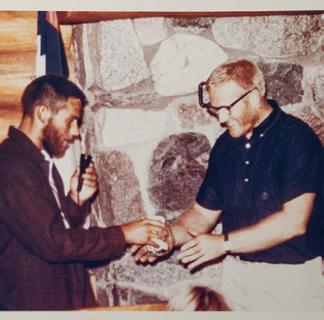
SEGMENT 1 OF OLD VOYAGEUR HIGHWAY — 1964 (THE FINAL TRIP)

SEGMENT 5 OF THE OLD VOYAGEUR HIGHWAY — 1957
(THE THIRD TRIP)
“From the Sturgeon-Weir River, the route led to Amisk Lake, where a bit of adventure lay ahead. The sunset was lovely, but the next day was so windy that one could look up at the crests of the oncoming waves.... Chuck, Jim and Terry
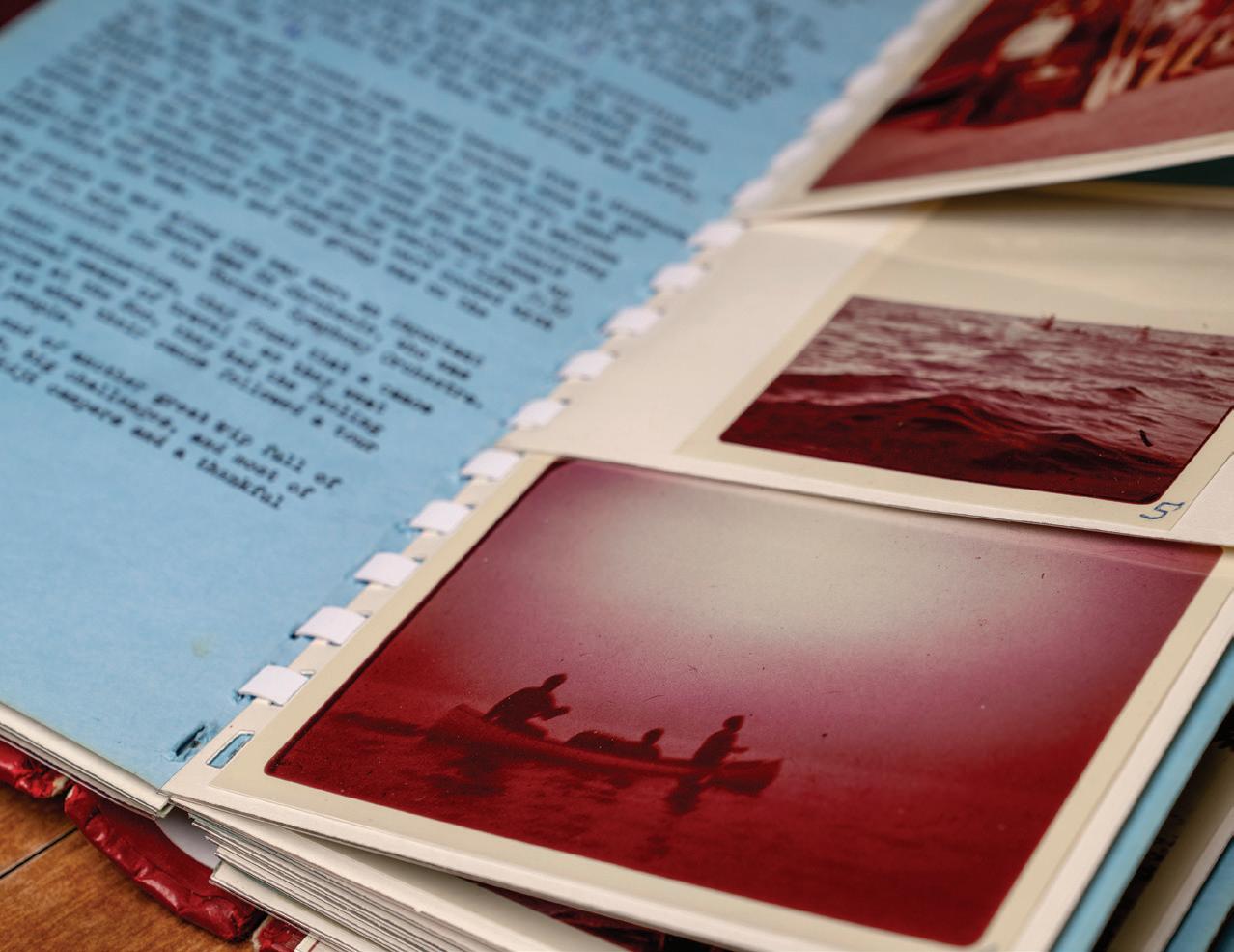
“The Voyageur stories were told around an evening campfire and the burning of our maps symbolized a feeling of pride and accomplishment. A feeling of admiration and fulfillment were involved as we presented this jar of St. Lawrence River water to Whitey Luehrs, the originator of the Voyageur program. And thus ended the final chapter of the Voyageur Program I.”
Whitey Luehrs receiving a jar of river water in 1964
Trekking to some of the most remote regions of Northern Canada and Alaska, navigating rivers like the Coppermine, Kazan, Thelon, and Noatak, this program takes campers on 30- to 40-day expeditions. These trips are led by Widji’s most experienced and highly trained staff, emphasizing leadership, resilience, and wilderness skills in a dynamic and challenging environment.
Tripping was part of Widjiwagan’s programming from the very beginning, but Whitey Luehrs established the Voyageur program during the first nine years, as commemorated in the scrapbook. Campers followed the route of the 18th century explorer, Alexander Mackenzie, the first European to cross North America in search of a Northwest Passage. His route spanned Canada, from Montreal to the Arctic and the Pacific Ocean.
“The idea of following the route of the 18th century explorer, Alexander Mackenzie, across Canada from Montreal to the Arctic and Pacific Ocean had a touch of genius about it… with one stroke it embedded the history of the north country into the program and endowed it with a sense of tradition.” (Widjiwagan: A History)
In 2025, 17 campers participated in three Voyageur trips. There were also nine campers who went on two Mountaineering trips (an expansion of the Voyageur program focusing on backpacking instead of canoeing).
THE VOYAGEUR LEGACY LIVES ON
Holding the beautiful leather book in my hands, I knew I wanted to share this piece of history in the magazine. Six issues later, I have heard countless stories from alumni about the impact of the Voyaguer trips. This program is part of Widji’s history and culture, a gem in present-day programming. Having a glimpse into where it all began and reading the stories of the people who charted the way is an opportunity to understand more deeply who and what Widjiwagan stands for.
Although the scrapbook was made in 1965, my hope was to find someone to interview who had helped make it or who was present when it was presented to Whitey. I was curious to listen to Luehrs’ reaction to receiving the book and to see if he had shared his thoughts about the completion of this first era of the Voyageur program.
That was the story I thought I was going to write.
I started by emailing photos of the book to my go-to camp “historians”—the people who seem to know everyone and everything about camp history. Over the following months, I immersed myself in the Widjiwagan alumni community. In total, I exchanged emails with, and/or spoke with 37 people.
Nearly every conversation included the same elements: People were excited to see the photos I’d sent and interested in learning more about the book. They eagerly told me their own Widjiwagan stories and suggested other Widji alumni I should speak with. No one remembered anything about the scrapbook or who had created it, nor did they know who had presented it to Whitey. Everyone was confident, though, that someone could tell me the story I was after.
With months of no luck finding the direct ties to the album, I questioned whether I should give up and find a new story to tell. However, the enthusiasm, passion, and deep connections that all these alumni shared were as much a treasure as the artifact I was trying to learn more about.
While I still think there is someone out there who knows the specific details I was looking for, months of sharing this book with the alumni community led me to this story. The scrapbook represents a program with a beautiful history that has remained strong for 70 years, growing, improving, and evolving, but the same today as in 1955, changing lives and significantly affecting the campers who participate. The result is a community of alumni deeply connected to one another and to Camp Widjiwagan.
So many of the stories shared in a scrapbook from so long ago continue to represent what campers are experiencing today. It is a beautiful artifact that represents the magic, enormity, and true power of what camp is and has been for decades.
As director of alumni philanthropy, I am pleased to work with eight overnight camps, each with a rich history and passionate alumni community. Through this magazine, we preserve history, share stories, and celebrate both the physical and mental journeys we endure while on our adventures. Acknowledging these individual stories and highlighting similarities in our unique experiences allows us to connect the dots between past and present and feel part of something so much bigger than a moment or an individual trip. And to play a part in connecting those dots and bringing the generations together is truly magical.
With that, my friends, I pass this time capsule to you and hope you enjoy these mementos and memories of those who came before us.
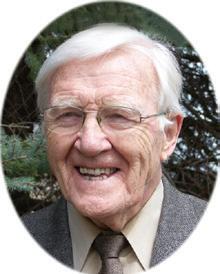
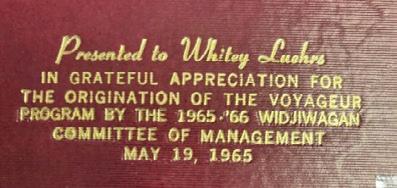
WHITEY LUEHRS
Armin “Whitey” Luehrs was the legendary director of YMCA Camp Widjiwagan from 195061, who founded YMCA Camp du Nord in 1961, became its first director, and later served as president of the American Camp Association. He was inducted into the YMCA National Hall of Fame in 2013 and passed away at the age of 95 in 2019.
During his leadership at Widji, Whitey’s visionary leadership set camp on a course it remains on today. One of the first changes he made was in 1951 when he implemented a standard group size of five campers and one counselor (before that, groups were much bigger). In “Widjiwagan: A History from 19291989” Whitey is described as coming to camp “with a well-developed theory of how a small group could be used as a tool for character building, and most of what he did at Widjiwagan grew from that theory.”
In 1955, he established the Voyageur program, and in 1956, he expanded the program to include female campers.
He oversaw the construction of several buildings around camp, including Kirby Lodge, the infirmary, several cabins, and the Trail Building.
Camp Widjiwagan
Camp Widjiwagan has been providing transformative wilderness experiences for youth from the edge of the Boundary Waters Canoe Area Wilderness in northeastern Minnesota since 1929. Through wilderness travel and environmental learning experiences, youth participants explore extraordinary places.




RETRACING MACKENZIE’S ROUTE ON GREAT SLAVE LAKE TO THE ARCTIC — 1960
“The objective of the 1960 trip was to retrace MacKenzie’s route on Great Slave Lake, paddling 1,100 miles in 36 days to the Arctic Ocean.”
“There was one objective now and that was to reach the polar sea. Fighting strong winds and paddling late at night in order to take advantage of the calmer weather, they paddled 200 miles in four days, switching paddlers every two hours and at noon time, building large fires on the rocks to keep warm. Weathering some light snow and spending the night in a swamp waiting out 65-miles-anhour wind, they finally arrived at Alklonik, an eskimo settlement that is also administrative headquarters for the Canadian government in this part of the Northwest Territories. The Royal Canadian Navy gave the group a fine welcome and helped us a great deal. To get to the ocean,

CHECK OUT MORE ALBUM PHOTOS HERE
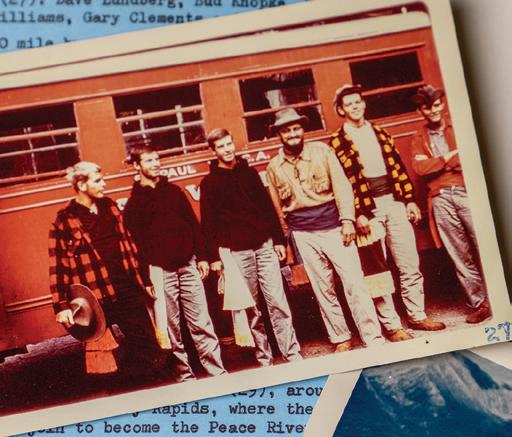
“The Boy Voyageurs arrival was expected and the reception was strictly of the red carpet variety. They camped in the postmasters’ backyard and a whirlwind of activities began, including an airplane ride, a tour of the town and its sights, a look at the government experimental farm and the local Indians even put on a special dance. At the end of two days, the whole town gathered together in the evening, and one of the motivating factors behind this grand reception was revealed in that recently one of the local residents had been in a St. Paul hospital and his life had been saved by blood donated by the people of St. Paul.”
FINAL SECTION OF
THE OLD VOYAGEUR HIGHWAY (AND
FIRST STRETCH
OF ALEXANDER’S EXPLORATION OF GREAT SLAVE LAKE) — 1959
“The 1950 Voyageur trip retraced the final stretch of the old Voyageur Highway from Waterways to Lake Athabasca, then began Sir Alexander MacKenzie’s route toward Great Slave Lake. On August 10th, they reached Lake Athabasca, camping at the same northwestern point where MacKenzie camped before and after his wrong way trip to the Arctic.”
1962
PUNCHAW LAKE TO THE PACIFIC OCEAN — 1962
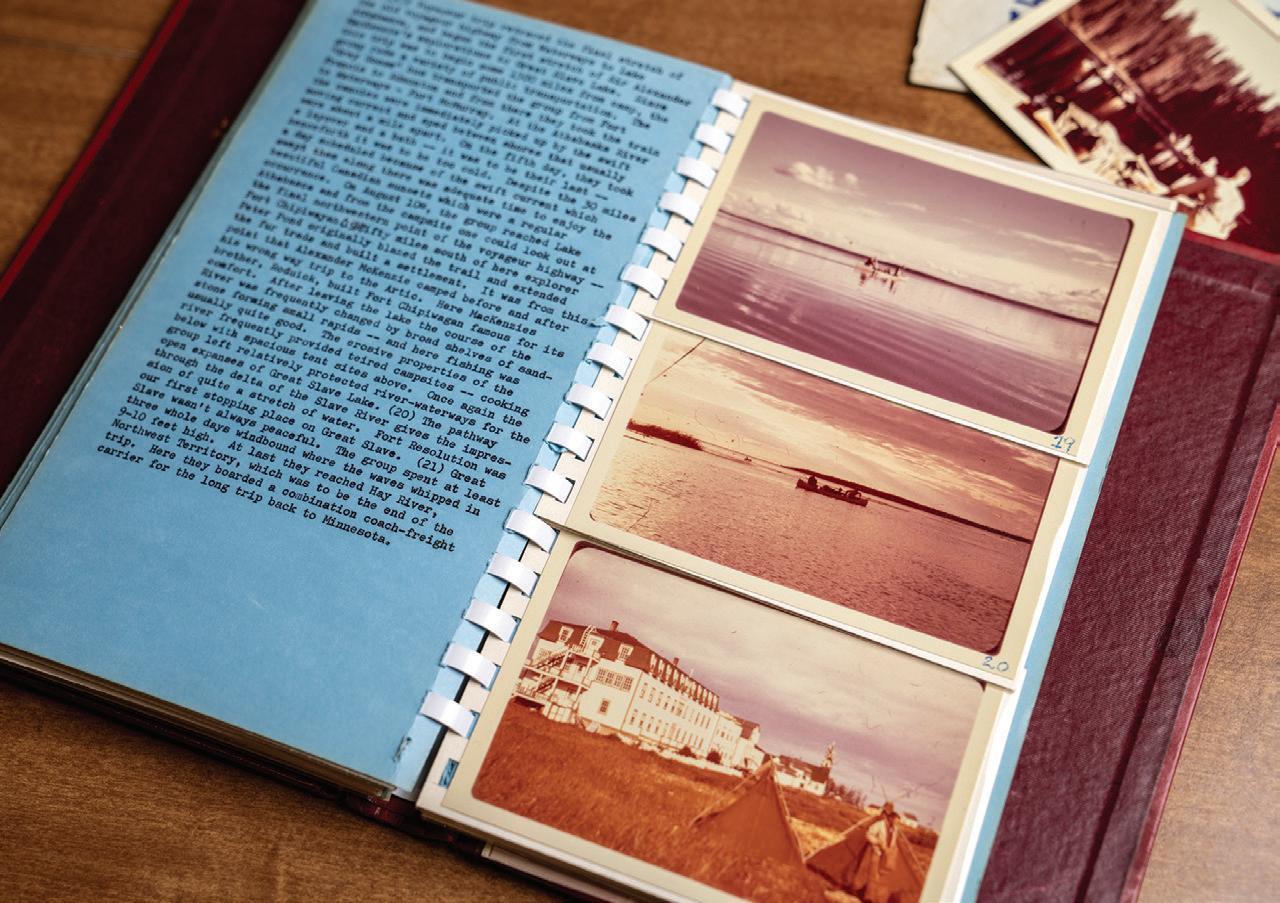
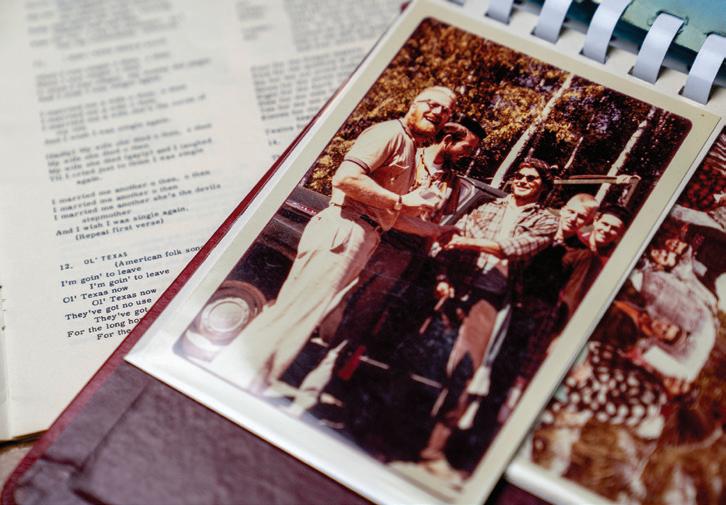
“And finally, after an absence of 43 days, they returned to Widji and were met by parents and friends and Whitey Luehrs. Windy gave him a peanut butter jar full of sea water. A peanut butter jar that had traveled with them to the Pacific Ocean, carrying part of our food and on the way back, carrying part of our lives. It’s meaning to the Voyageurs and to Whitey was the meaning of a challenge met, a promise fulfilled, and a trip completed.”

‘CAMP WARREN ISN’T JUST A PLACE WE GO; IT’S WHO WE ARE’
40 years of women at Warren
EDITOR’S NOTE: In the history of Camp Warren, there have been many great women who have led, inspired, and left their mark. This article is not comprehensive of every extraordinary woman who has impacted camp; rather, this is a sampling of some of the highlights over the past four decades. Sometimes history isn’t perfectly clear; there were unofficial first trips or experimental weekends or groups that visited camp. We’ve done our best to verify the facts and confirm the dates of everything we’ve included, but we acknowledge that there may have been “firsts” that aren’t included here. We welcome your feedback, stories, and any information you’d like to share. If you read this article and notice something we’ve missed, please get in touch!
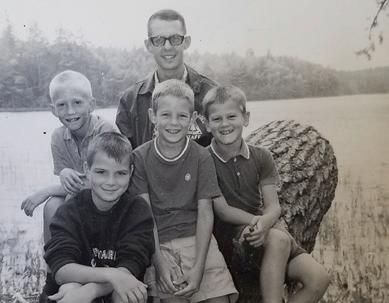
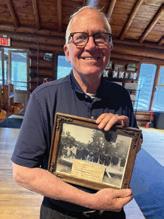
YMCA CAMP WARREN WAS FOUNDED IN 1929, and for 56 years, it was a camp for boys. Programming was designed to teach them new skills, help them grow in confidence and independence, and thrive in

But then, from a seed of passionate, dedicated alumni who loved their experiences at camp, a new path was blazed.
The roots of this story begin in 1956, when Peter Hitch was a camper at Warren. He spent eight summers as a camper and made many lifelong friendships with the boys he met. In 1983, Peter and his camp friend Bob Cosgrove were serving on the board of directors for Camp Warren and began discussing their desire for their daughters to experience Warren. They believed in the importance of building strong, confident women. Prompted by this, the board conducted research, held discussions, and ultimately decided to offer camp sessions specifically for female campers.
Read on and walk the path of the women at Warren, fully present now for 40 years at camp, with countless stories from those who blazed new trails and crafted new legends told around the Warren campfire.
1985: THE FIRSTEVER FEMALE CAMPERS
As remembered by
Camp Warren offers one session of girls’ camp for the first time. “Not a lot of people were sending their precious girls to the woods. Those of us who took to it made the best of friends at camp. Those dads still had friends from when they were at camp and wanted that for us; it was a really incredible gift.”





Emilie Hitch
Peter at camp in 1956
Peter with his Border photo
Peter’s 1964 Long Border trip

1991: WHERE THE SONG BEGAN
As told
by

Gayle “Buffy” Gradillas
It started with a simple invitation, “Would you be willing to lead Women’s Long Border?” A friend asked me, and I said yes. I didn’t know then that saying yes would lead to decades of friendships, cherished memories, and a family legacy that would stretch three generations.
That first trip wasn’t easy. The girls didn’t know me, and I wasn’t about to lead anyone into the wilderness without knowing they were ready. So, I tested them. I needed to see their strength and resilience, because the Long Border is no small feat. It was from that very trip, from those very girls, that the Women’s Long Border song was born. It’s been sung on every Long Border since.
As I worked to revamp the OCC (Out of Camp Camping) program, my own children were growing up at Warren. I became inventive with

1994: THE FIRST GROUP OF WOMEN SENIOR CAMPERS
As recalled by Emilie Hitch
“We were aware that this was a moment in history. In the first year of camp, we didn’t even use all of the cabins. Every year, the girls’ camp grew, and we learned more of the traditions. These women set the tone that girls’ camp was just as rad, and we were just as accomplished as the boys were.”
food donations; trail meals with Captain Crunch and Mrs. Richardson’s syrup were regular fare. I also instituted OCC Night to help all campers become familiar with the basics of trail camping. Camp became home. My daughter Devin eventually became a leader in her own right, culminating in her own journey as Women’s Long Border leader, co-director, and a keeper of camp’s spirit.
But nothing prepared me for the feeling that overcame me in 2023 when my granddaughter, Piper, paddled across Half Moon Lake for her own Long Border salute. A third-generation Long Border Warrior singing our song. It was as if all those memories had come full circle. This summer, her younger sister Abby will follow, singing that same song across the same lake, as we salute from the dock.
Time passes, traditions remain, and camp— beautiful, unforgettable Camp Warren— continues to be the thread that binds us all.

2000: THE FIRST FEMALE EXECUTIVE DIRECTOR, SERVING UNTIL 2005
As shared by Cheri Keepers
“I felt really honored being a woman in that role. I had a lot of support, particularly from the men who had fought so hard to get their daughters to camp. Everyone was navigating change, but I felt warmly received, and when I matched their energy with competence and confidence, they were receptive.”

2005-14: ONE OF FIRST FEMALE CAMPERS, MEGHAN COSGROVE, BECOMES CAMP’S EXECUTIVE DIRECTOR
As described by Cheri Keepers
“Meghan has a fortitude about her that is so real, and she is almost perfectly cut out for being a camp director. She was an insider and possessed the core skills of leadership excellence. It suited her, and everyone was excited when she was hired.” Meghan, whose grandfather, Henry Albrecht, attended Camp Warren in its inaugural summer in 1927, was a family camper as far back as 1982. She became a girl camper in just the third girls’ session ever in 1987, continuing until ’95 (with her Long Border in 1994). Meghan served as summer staff 1996-2001, and later as executive director from 2005-14.”
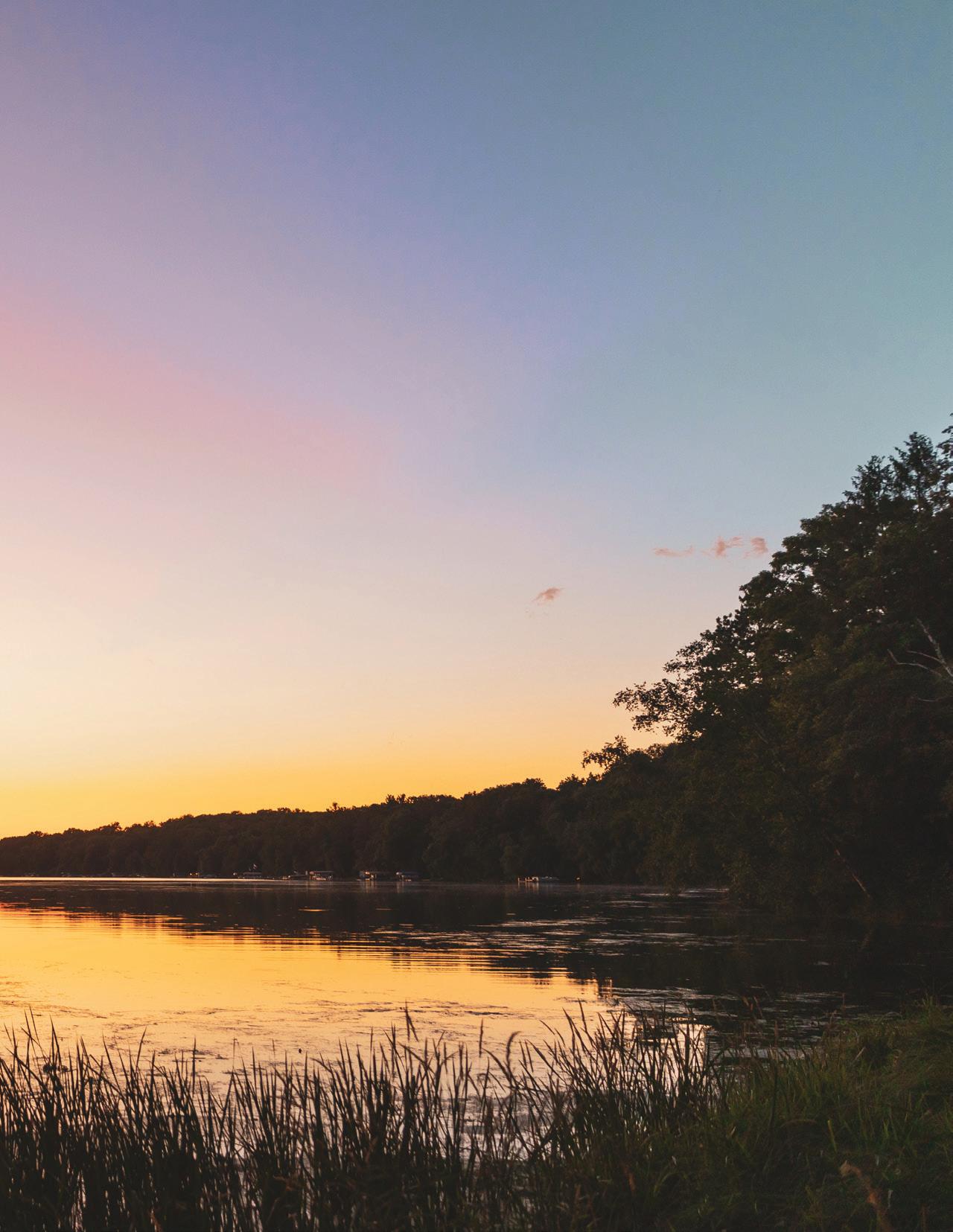
While our girls share many commonalities in terms of life experiences and interests, I’m most amazed by how girls’ camp showcases the full spectrum of girlhood. Yes, many girls love singing, dancing, and makeup...but every session, we also meet young archers, athletes, writers, jugglers, problemsolvers, connectors, creatives, and leaders. Putting girls in a box has never made sense here.
Jeanna Nesbitt
Senior Women campers on the Silha deck in 1994
Cheri and her family pictured in 2024
Meghan Cosgrove
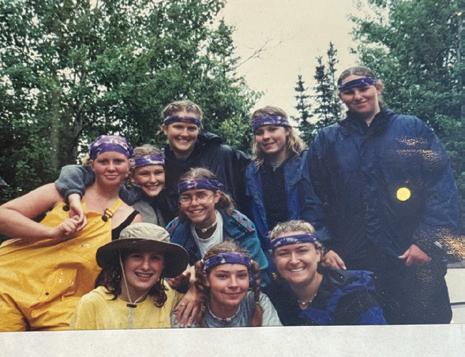
2009: COMING HOME AGAIN

Piper and Devin in 2009
As told by Devin Knowles Hanson (camper 1991-92, staff 1997-2009)
“My Camp Warren story begins in 1991 — not with me, but with my mother. She was invited to lead a Long Border trip, and I was just along for the ride as a camper in Senior 6. I had no idea that summer would change everything. I still remember watching her paddle across Half Moon Lake with her group, singing a song they’d written about their journey. The pride in her voice, the connection between those women. It was unforgettable.
When her trip ended, we left, and I thought my time at camp was over. However, she received a call to return — this time as the OCC Director. That meant I could return, too. I’ll never forget walking into the dining hall, only to be greeted by the entire Senior section singing my name. In that moment, I knew: this was home.
Then in 1997, I joined the staff, making $20 a day washing dishes and lifeguarding, and I loved every second. Camp taught me responsibility, leadership, and the power of service. I went on to earn my degree in recreation management and eventually became the program director, working side by side with one of my closest friends, Meghan Cosgrove. Together, we helped make camp better.
When my daughter Piper was born, she spent her first summer (2009) at Warren as a baby, traveling everywhere in her backpack. I finished my time as a staff member after that summer. Later, both Piper and my other daughter Abby became campers, and I watched, heart full, as they fell in love with camp just as I had.
Time passes, traditions remain, and camp — beautiful, unforgettable Camp Warren — continues to be the thread that binds us all.
“
Buffy Gradillas

2021: JEANNA NESBITT BECOMES EXECUTIVE DIRECTOR
This summer (2025) is Piper’s last as a camper, completing the CIT program and preparing to join the staff. Abby is on her own Long Border journey. As she crosses Half Moon Lake singing the same song her Nana’s group created in 1991, I will be on the dock with my mom and Piper — cheering, crying, bursting with pride.
Camp Warren isn’t just a place we go. It’s who we are.”

As shared by Jeanna Nesbitt (camper 2003-10, staff 2011-16, executive director, 2021-present)
“While our girls share many commonalities in terms of life experiences and interests, I’m most amazed by how girls’ camp showcases the full spectrum of girlhood. Yes, many girls love singing, dancing, and makeup ... but every session, we also meet young archers, athletes, writers, jugglers, problem-solvers, connectors, creatives, and leaders. Putting girls in a box has never made sense here.
Camp Warren is a place of comfort, activity, tradition, history, excitement, and friendship, for my family, my friends, and myself.
Piper Hanson “ “
My girls’ camp friends taught me more than just how to apply mascara and nail polish with my left hand; they taught me the importance of unwavering friendship and the power of a team of women.
One of the best things about being a Warren woman is having met so many incredible role models! I remember my female counselors, trail guides, instructors, and directors fondly. I have the opportunity to meet many incredible alumni and volunteers on a regular basis. I know many inspiring, powerful women because of this place.
I hope that our young women continue to learn the importance of supporting and uplifting one another in difficult moments. Women can achieve amazing things, and even more amazing things working together!”
Jeanna Nesbitt at camp



2023: A FAMILY’S THIRD GENERATION SETS SAIL
As related by Piper Hanson
“This summer marks my 10th year at Camp Warren. Ten summers of sailing, singing, laughing, and learning. This summer, I will participate in the CIT program and prepare to become a counselor.
My mom and my Nana both went to Warren. They were Long Border warriors. They built the traditions that I get to live today. In 2023, I joined them, becoming the third generation in our family to cross Half Moon Lake on a Long Border trip.
Now, I’m preparing to welcome my little sister Abby across the lake, just like they did for me. They’ll sing the same song. I’ll stand on that same dock. And we’ll pass the tradition forward, just like my family has done for over 30 years.
I know that I am not the only one who has benefited from going to camp. So many young men and women share my love for the sense of community, belonging, and fun that can be found at camp. Personally, camp has given me an escape to enjoy nature and to slow down, appreciating all the people around me.
I see many things at camp that my family has given to the camp, such as the Women’s Long Border song and the OCC program, as well as our daily schedule, which my mom helped put together. This always reminds me of the hard-working staff in Warren’s past who have changed, expanded, and morphed the program into something that benefits everyone.”
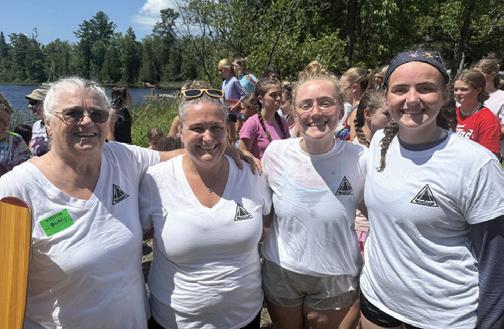

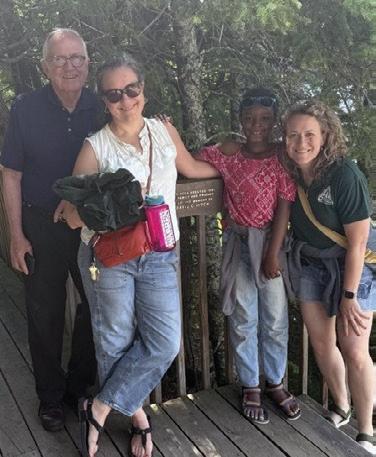
2025: PAYING TRIBUTE TO THE PATH BUILDERS IN OUR HISTORY
Peter Hitch, Alyssa Hitch, Elinor Johnson, Emilie Hitch stand on the Hitch deck at Camp Warren. The deck is named in honor of Peter’s brother, David Hitch, who was a camper and on staff.
Peter — camper 1956-63
Alyssa — camper 1988-90
Elinor — 4th generation camper in 2025
Emilie Hitch — camper 1985-95, staff 1996-2004
2025: ABBY HANSON (BUFFY’S GRANDDAUGHTER, DEVIN’S DAUGHTER, PIPER’S SISTER) COMPLETES HER LONG BORDER TRIP


Camp Warren
Camp Warren is nestled amongst white pines on 600 acres near Eveleth, Minnesota. Warren provides the ultimate setting for participants to develop self-reliance, build life-long relationships, and receive mentorship from caring adults with a curriculum focused on skill progression.

Piper as a camper in 2016
Abby’s first year at camp in 2018
Piper and Abby in 2024
Hitch family in 2025
Counselor Dan Danielson and other campers.

FROM CAMP NORTHLAND TO CAMP DU NORD: A LEGACY CONTINUES
“WITHOUT EVEN HAVING TO THINK, I am in the stern of a canoe gliding across Lake Burntside. The water and the impossibly blue sky are separated by a band of intense green, forming a landscape that never gets old,” said Kay Lehman Schlozman. “In the bow of my canoe — and in the canoes that are traveling beside the one in which I am paddling — are friends I have known for more decades than I care to count, since I arrived at Camp Northland at the age of 10.
“I have returned to Lake Burntside many times since that first summer [in 1957], and I conclude each visit by standing on the shore and bidding the lake farewell, preserving the memory until I return in a couple of years. That setting, along with the friends associated with it, is a fundamental part of who I am. I am very grateful for them.”
YMCA Camp du Nord’s fabled history often begins with a tale of sister-teachers and a certain famous Finnish sauna. But one of the most beloved aspects of the camp had a different origin, one rich in stories and celebrated by
Its name — Camp Northland for Girls — is known to many at du Nord, though the camp itself is something of a mystery to most.
Though if you know where to look, Camp Northland left an indelible footprint on du Nord, just as it did on the women who attended so many summers ago.
THE FREEDOM TO BE
The camp was founded in 1947 by husband and wife Al “Skipper” and Leland “Bergie” Bergland, and operated until it was sold to the YMCA of Greater St. Paul in 1980. Offering seven-week sessions, the camp’s mission focused on fostering a love of the wilderness, developing outdoor skills, promoting selfreliance, and providing fun.
The camp was unlike anything else in its opening years. It wouldn’t be until 17 years later that the Y’s Northwoods camps (YMCA Camps Widjiwagan, Menogyn, or Warren) would begin to offer programs for girls, and du Nord wouldn’t become a Y camp until 1960.
don’t know how unusual we were, but taking trips, six days in the Boundary Waters, I don’t know if they were doing that with girls,” said Susan Mozena. “What I was given by going there was such a special gift. To have a sense of physicality. That sense of confidence. Camp gave me the confidence to know my physical self as well as my intellectual self.”
Daily activities allowed for consistency and exploration. Every day after breakfast, the girls gathered for Morning Sing. On the big board in the lodge, counselors would hang up the activities for the day, and kids would sign up and head out for fun and adventure, growing in confidence.
“Northland allowed girls to develop independently of the social stereotypes and restraints we endured at home,” said Lindsey Lang. “I arrived at Camp Northland as a shy preteen, and through the supportive environment developed the confidence to sail on a windy day to win the annual sailing regatta, to play the fool in weekly theater performances, but mostly to make friends



Camp du Nord
Founded in 1961, Camp du Nord is a family destination located deep in Minnesota’s Northwoods. Situated on the edge of the Boundary Waters Canoe Area Wilderness, du Nord provides access to miles of hiking and skiing trails, as well as family and group programming throughout the year.



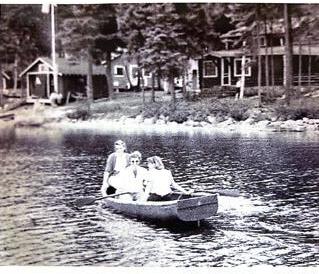
Northland campers (date unknown)


Camp activities included canoeing, sailing, swim lessons, water ballet, tennis, archery, riflery, drama, horseback riding, and more. The gymnastic activities used a balance beam made out of a straight tree. Music and singing were important to camp — every canoe trip that went out brought back a new song, usually written to the tune of a popular song from the radio.
From a blog entry by Molly Rubens Nunnelly, the lyrics to one favorite:
Tall girls, short girls, fat and thin, Whatcha gonna do when the heat sets in?
Nothin’ to do, nothin’ to say,
That’s the time to pack your bags and go away: Come to Camp Northland where the breezes blow, Come to Camp Northland where you swim and row; Answer the ever luring call:
Camp Northland girls, the best of all!
Boom dadi yada, Some Girls!
“This was my home away from home,” said Lindsey. “Nine months of school were just waiting for camp.”



THE BONDS OF HARMONY
Fast forward to September 2024, and the dining hall at Camp du Nord filled with song over the lunch hour. A group of about 20 women sat at the wooden tables, chairs pushed back after eating something delicious. Small groups of staff and campers fell silent as the melody swelled.
When they finished, these women, most of whom were at least 70 years young, smiled and moved on with the afternoon of their semi-annual reunion. The first of these reunions took place in 1986, and they’ve continued ever since. Filled with fellowship and song, they’ve drawn these women together again in the decades since, growing as the years went by.
Lindsay, who attended camp from 1964-71, said that initially, reunions were organized with a mailing list of
“ “
Camp was so empowering to us. They assumed we were capable of doing things and let us make our own decisions.
Kay Lehman Schlozman
600 names. They started having reunions every three years, and e-mail and modern communications have made it easier to stay connected as the years went by.
Pat Schultz, a Northland alumna and the retired 25-year aquatics director of the then-named Northeast Family YMCA in White Bear Lake, walked past some Y staff deep in conversation. “We love to sing, you know,” she said. “A few years ago, we had a reunion in Alaska. We got flown in by a bush plane and canoed down the river. Some of the women started to complain, ‘we never saw any wildlife.’ ” Pat smiled, a gleam in her eye. “I told them it’s because we never shut up! We just never stopped singing all the way down that river.”
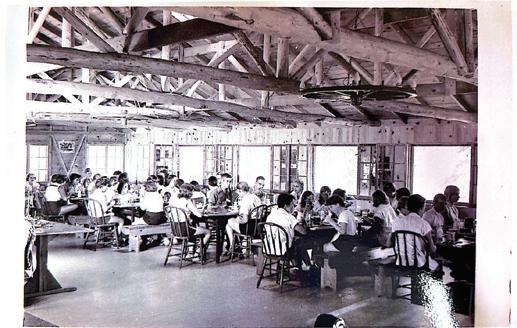
“Camp was so empowering to us,” said Kay. “They assumed we were capable of doing things and let us make our own decisions.”
Pat agreed. “The thing about Northland was that no one ever told us we couldn’t do whatever we wanted to do.”
Northland campers in the dining hall (date unknown)
THE WAYS NORTHLAND LIVES ON TODAY
Skipper and Bergie’s son, Nick, took over as director in 1968 and ran camp for 12 years. But in 1981, he decided to close camp and sell the property. For two years, the camp sat empty, during which time Northland alumni visited and collected as much memorabilia as they could. Camp signs, song books, the dining hall bell, and much more were gathered up. Pat remembers filling her car with as much as she could, determined to preserve as much of the history of Northland as possible.
Ultimately, the YMCA purchased the property in 1982, and, led by the former Widjiwagan Program Coordinator John Shepard, they established YMCA Camp Northland, offering North Woods experiences to special-needs groups. Northland operated as an independent camp until 1991, when it was officially merged with du Nord, where ever since its been known as Northland Village
But Northland’s legacy isn’t confined just to its former boundaries. By the early 1990s, Skipper still owned 78 acres of property east of du Nord, known as Pine Pointe. He sold that piece of land to the YMCA in 1994, which allowed camp to expand into the three villages it is today.
Today, the connection to Northland isn’t lost, nor forgotten. Du Nord’s thread is inextricably wound through Northland, just as the alumnae from Northland have adopted du Nord as their convening host for their reunions.
“It is so cool that the Northland women are still so connected. It is always fun to hear their camp stories and listen to them singing their songs,”
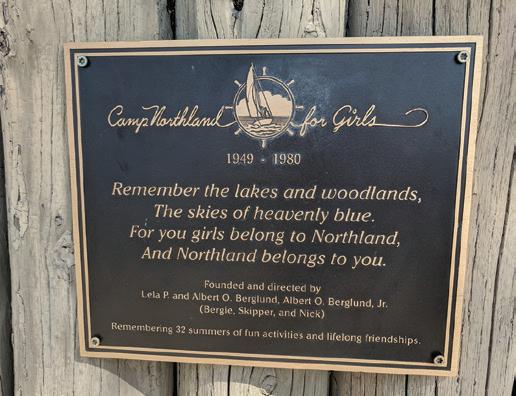
said Emily Weise, camp’s fall, winter, and spring program director.
Every week of the summer, the du Nord team hosts a tour of camp, highlighting its history. As these tour groups explore camp’s three villages — Pine Pointe, du Nord, and Northland — camp staff share what they know about the old girls’ camp as people walk toward the Boat House with its memorial plaque, or look down the lake shore toward Skipper’s Cabin — renamed for Al Bergland not so long ago. Families and staff alike stand upon Sailor’s Rock, gazing out toward Blueberry Island just as Kay has, though few know its old name. Perhaps after reading this article, more will know it by this name.
The next time you find yourself wandering to the Northland Boathouse at du Nord, seek out the plaque affixed to its wall, which reads:
Camp Northland for Girls 1949-1980
Remember the lakes and woodlands, The skies of heavenly blue.
For you girls belong to Northland, And Northland belongs to you.
Remembering 32 summers of fun activities and lifelong friendships
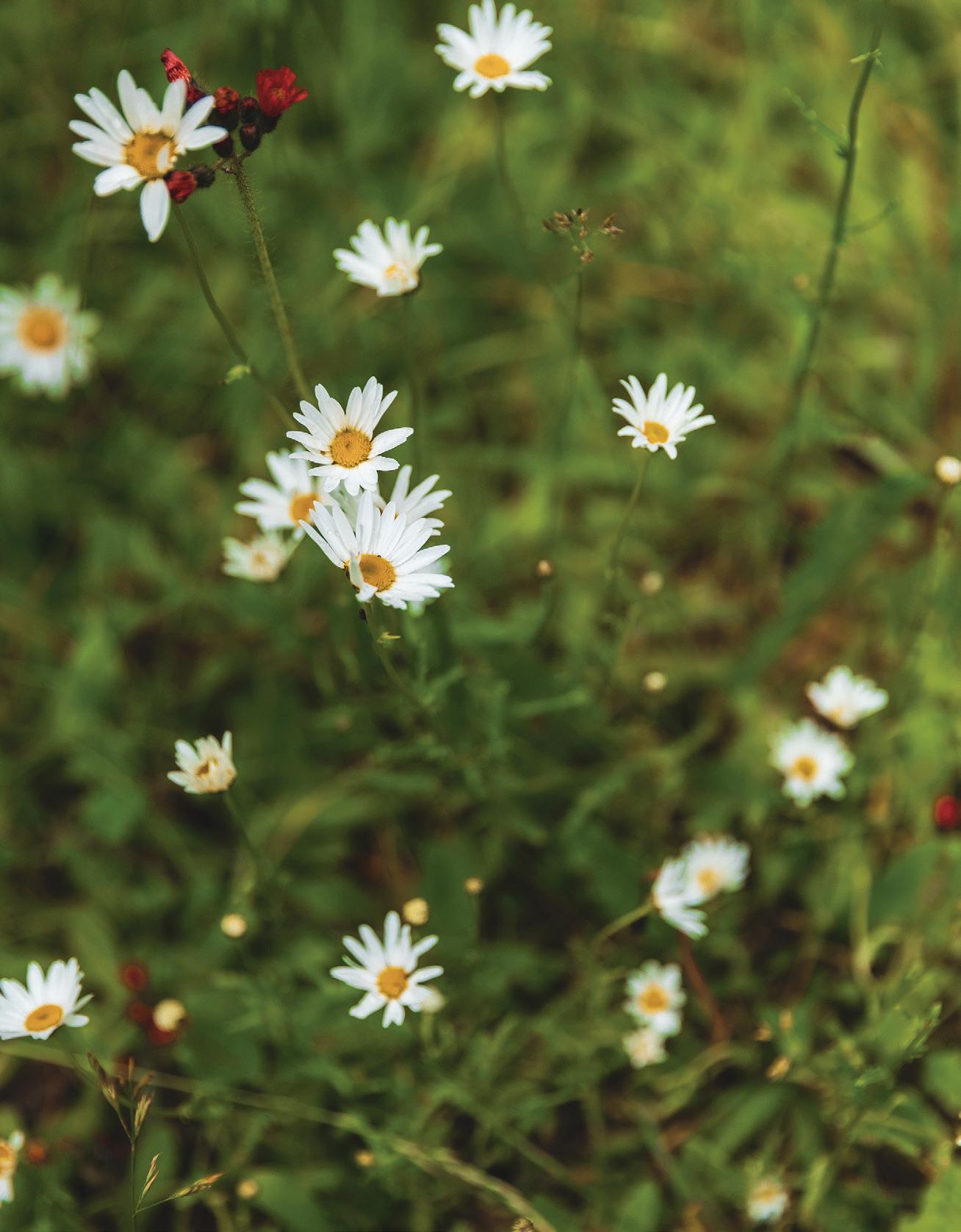
“The legacy of Camp Northland remains at camp to this day,” said Andy Sinykin, Camp du Nord’s executive director. “Whether it’s during a week of family camp or as part of the tri-annual ‘Northland Girls’ reunion. The du Nord campers and staff continue to feel the passion for the outdoors and the value of community that was instilled by Camp Northland years ago.”
Forever in the hearts of the women of Northland
Reflecting on her time at Northland, Lindsey imagines herself on Sailor’s Rock, looking out at Blueberry Island onto the North Arm of Burntside, down toward the Narrows. A song comes to mind, set to the tune of “Follow Me” from “Camelot.”
Loving hearts, peaceful minds, One in thought, hopes entwined, Smiles mirrored in your eyes, All these things, friendship ties.
All these things that bring peace, In friendships true never cease, never cease, never cease.
Just like the legacy of Camp Northland for Girls, a legacy that will never cease to be a part of the YMCA tradition.
CAMP LIFE: SHOW & TELL
In our April issue, we asked for your best photos in the following categories: 1. Under the Stars 2. Seen on Trail 3. We Went by Canoe Big thanks to all those who shared photos! See the top photos below.
UNDER THE STARS


THANK YOU TO EVERYONE WHO SUBMITTED PHOTOS. THE WINNERS HAVE BEEN CONTACTED DIRECTLY

SEEN ON TRAIL
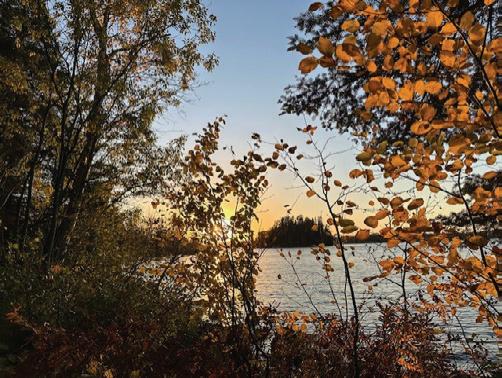

WE


Isla Stevens, Camp Menogyn
Layla DeMoulin, Camp St. Croix
WENT BY CANOE
Isla Stevens, Camp Menogyn
Melissa Wilson, Camp Northern Lights
Shannon Schuver, Camp Northern Lights
LETTERS FROM ALUMNI

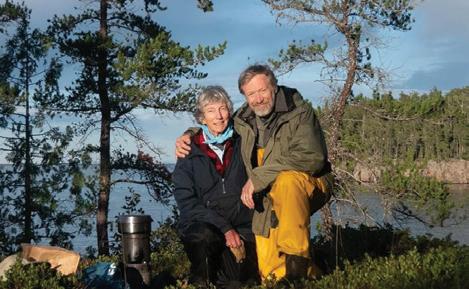
CANDY CLARKE PETERSON (WIDJI VOYAGEUR, 1966)
Camp Widjiwagan changed my life, and at the age of 77, I am still celebrating and learning from its traditions. As a first-year camper, a string-bean 13-yearold, the physical challenge of carrying a canoe or food pack was daunting, and I chuckle to think of how I would have whined had either of my dear parents suggested I help out in these ways on family camping trips! Perhaps it was the pride in accomplishing these tasks that made me so devoted to the Widji Way to paddle a canoe, pitch a tent, chop wood, and care for equipment, to the point of becoming obnoxious on subsequent family outings when standards were different.
Each summer, I learned how effective it is to work with a group to finish even a short canoe trip. The intensity of the experience and the intimacy of sharing one tent changed me. Always, someone in the group made a mistake or had a fall, evoking the compassion that, I’ve decided, is our most important human quality. In a society that values personal strength and independence, Widji taught me how cooperation and empathy foster success.
Perhaps most importantly, Widji taught me the value of friendship. How quickly the strangers that are assigned to a group become friends, and oh, the tears at that last campfire!!! Each relationship brings out a different aspect of our personalities, and the energy generated as we grow in experience is just the sort of love the world needs now. At a time when “family values” are touted as the building blocks of a healthy society, I think friendship, particularly new ones, is underrated. The more different our outsides seem at first meeting, the stronger the attachment when our hearts connect.

ERIN WALSH, ICAGHOWAN AND WIDJIWAGAN
Erin Walsh attended YMCA Camp Icaghowan from 1990-1995 and YMCA Camp Widjiwagan from 1996-1999, then served on the Widjiwagan staff from 1999-2003 and the Widjiwagan board from 2008-2017.
She describes her camp experiences as an “anchor for my childhood and adolescence.” Now in her career, she uses stories from her camp experiences in her teaching and writing.
Erin and her father, Dr. David Walsh, have worked together for nearly 20 years. They started together at the National Institute on Media and the Family before creating Spark & Stitch Institute in 2019. She co-authored the 10th Anniversary Edition of the national bestseller Why Do They Act That Way? A Survival Guide to the Adolescent Brain for You and Your Teen.
In May 2025, her latest book, It’s Their World: Teens, Screens, and the Science of Adolescence was published.
In the book, she describes teenage brain development using passages from the journal she kept while on a Widji trip.
Erin Walsh “ ”
The thing I really love about camp is not just the absence of something like technology, but the presence of relationships, challenge, and purposeful exploration. That is what kids need to have in their lives.
On a recent circumnavigation of Isle Royale with my husband Rolf, also a former Widji camper and counselor, the Widji tradition of evening devotions came to mind and I found myself singing “The Widjiwaganites Prayer,” still posted, I hope, to the left of the stone fireplace in the dining hall. “God, who touches earth with beauty, make me lovely, too……”. The awe for the marvels of creation and the hope that I can become kinder and more generous are Widji lessons that continue to inspire me, and I am grateful.
As a college student and Widji counselor, I thought humanity was at the dawning of the Age of Aquarius, but in order for there to be peace on earth, the people of the world need to be in touch with each other, as they are today. Now that we understand so much more about our connections to each other and to all our fellow-travelers on the planet, we can choose to evaluate all our actions in terms of their effects. “Turn my dreams to noble actions, ministries of love.” It is simply a matter of increasing our scope of caring.
Thank you, dear Camp Widjiwagan!!!
Candy Clarke Peterson and Rolf Peterson

ARTWORK FROM CAMP
This beautiful piece of art was created at Camp Northern Lights in 2024. Heather Schuer drew the picture and then the campers colored it while at camp. It hangs in the Family Art Barn.
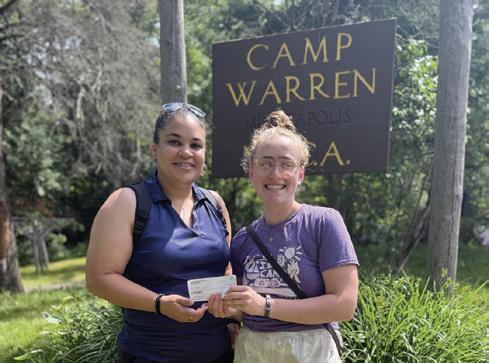
PIPER HANSON, CAMP WARREN
On July 2, 2025, Piper Hanson presented a check for $600 to Executive Director Jeanna Nesbitt at Camp Warren.
Piper is a member of Job’s Daughters International, an organization whose mission is to create confident young women, respect tradition, and shape the future. Members learn invaluable skills that increase their confidence and prepare them to lead and to use their voice. As part of her term leading the local group in Robbinsdale, she chose to raise money for the BOLD & GOLD scholarship program.
I’ve always loved going on trail through camp and want other people to experience and gain the appreciation for nature that I have. Piper Hanson “ ”
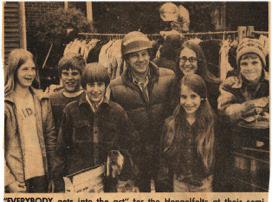
50 TH AND FINAL GARAGE SALE
June 2025 marked the 50th and final Widji/du Nord garage sale. Started in Bob and Sue Hengelfelt’s garage in 1970, the garage sale was a biannual event run by volunteers to raise money for camp scholarships. Over the years, the sale grew, expanding into the neighboring yards and eventually moving to the Minnesota State Fairgrounds.
As many as 120 volunteers each year worked hard to make the sale a huge success. Claire Bergstrom, a garage sale volunteer, described the eventual vastness of the annual event, stating, “We had a clothing department, a shoe department, a book department with sections for fiction, kids books, CDs, and so on. Volunteers would be in charge of a section and would work all weekend, first organizing and pricing and then running the garage sale. It was crazy!”
The garage sale raised as much as $30,000 each year and in 2010, the committee created an endowment, ensuring that the generosity would continue for years to come.
2020 was supposed to be the 50th anniversary of the sale but was cancelled due to the Covid pandemic. The sale had been on hiatus, but in 2025 came back for its final year. Many thanks go out to the countless volunteers who gave their time and energy, as well as the donors, shoppers, and everyone who came together to make this event a huge success for five decades!
Piper Hanson and Executive Director Jeanna Nesbitt at Camp Warren
Melissa Wilson, Camp Northern Lights
LETTER FROM THE VICE PRESIDENT
In early August, I had the joy of sharing a picnic lunch with our YMCA Alumni Board and members. As I walked up to the gathering, I was greeted by many familiar faces, leaders I’ve known and admired since childhood. They weren’t just from camps or adventure programs, but from every corner of the YMCA movement: branch executives, HR directors, Y-USA colleagues, and others who’ve shaped this organization in profound ways.
What stood out most wasn’t just the roles they once held, but the spirit they continue to carry. In retirement, or in their “give back” time, they are still showing up. They’re still investing their energy, wisdom, and hearts in the Y mission and its impact on the community. Their presence reminded me that the YMCA is not just a job or even a calling; it’s a lifelong movement, and it lives on through each of us. A civil society is made up of music, art, innovation, philosophy, conversations that differ in opinion, and care for one another.
I was also reminded that the Y exists in over 160 countries, with an impact that looks vastly different from Ukraine to Estes Park. One thing held true across borders and generations, however, is the people. It’s the shared desire to strengthen community, foster belonging, and lead with compassion that binds us together. This is the makeup of a civil society, one that benefits all and encourages giving back.
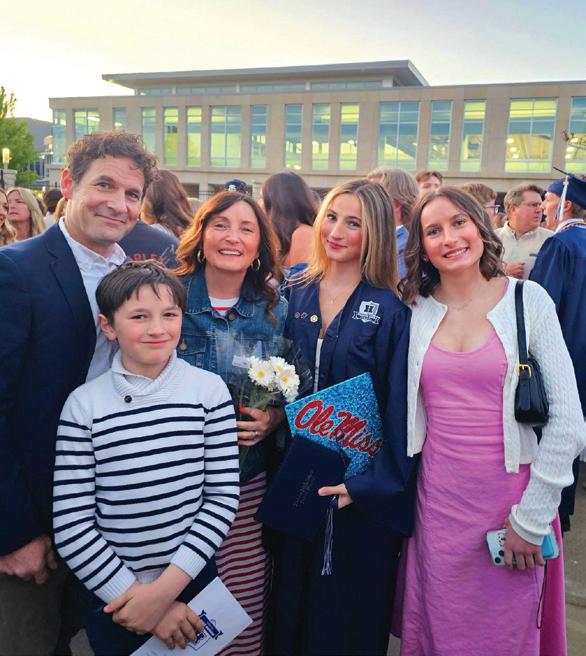
That small picnic shelter was brimming with experience, humor, grace, and fierce love for this work. As you read this issue, I hope the stories we share continue to spark memories of your own Y journey, reminders of what we’ve built together, of all that’s still ahead, and of the contributions made.
You are part of this ongoing story. We invite you to keep sharing your thoughts, your stories, and most of all, your heart.
Michel Tigan
MICHEL TIGAN Senior Vice President of Adventure and Camp Operations

A
civil society is born of people connecting with one another — with stories, with compassion, and with a commitment to something greater than themselves.









ALUMNI DAY OF GIVING NOV. 5
Join alumni nationwide in supporting Y Camps on Nov. 5 — and don’t wait! Give early between Oct. 16 and Nov. 4 to receive a heritage camp logo sticker, or become a sustaining donor to get a window cling. Every gift helps ensure no camper is turned away.

ADVENTURE
651 Nicollet Mall, Suite 500 Minneapolis, MN 55402
ADVENTURES FOR YOUR MIND CROSSWORD PUZZLE

Down:
1. Counselors on-site can reach out to other staff and the nurse(s) on call using one of these.
2. This is the title of the staff member who is responsible for caring for sled dogs.
3. The first photo of senior women campers from Camp Warren was taken on this deck in 1994.
4. Whitey Luehrs founded this camp in 1961.
7. Before it was Camp du Nord, this girls camp operated from 1947-1980.
9. Camp nurses are responsible for a variety of tasks, including the management of this for sometimes up to 60 campers at a time.
Across:
5. He served as the Camp St. Croix director from 1950-57.
6. Not all Widji campers take part in this program, but for those who do, it is a 40-day expedition.
8. This is a type of folktale that narrates and explains the origin of something, often in the natural world.
10. This is the name of the show put on weekly during the summer at Camp Northern Lights.
11. Donate to your favorite camp(s) between October 16 and November 5 to be part of this.
12. She is the current executive director of Camp Warren.
